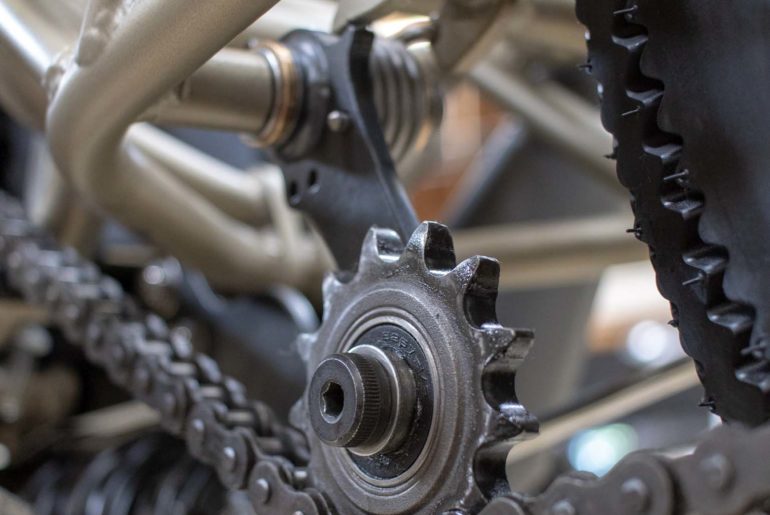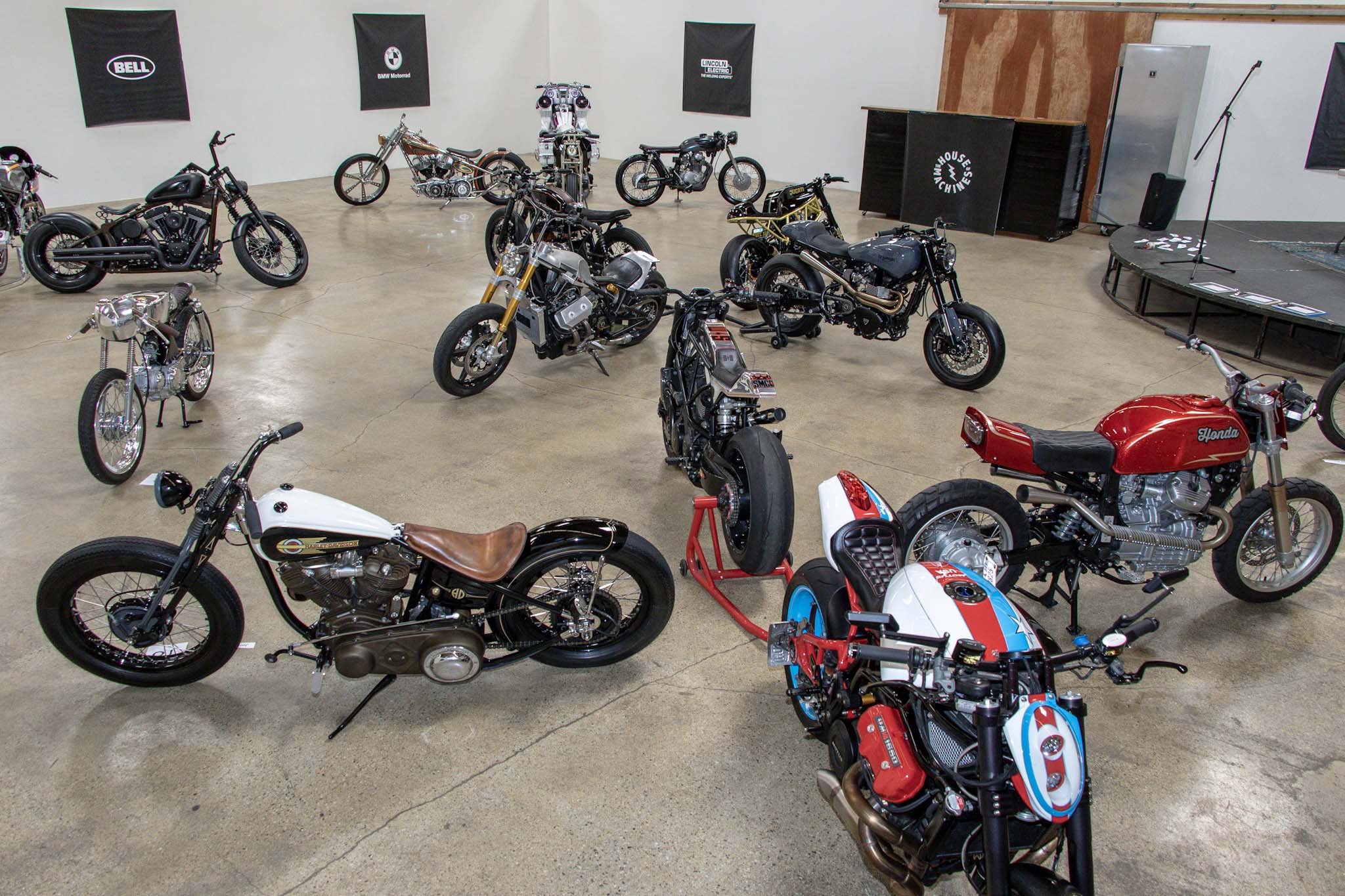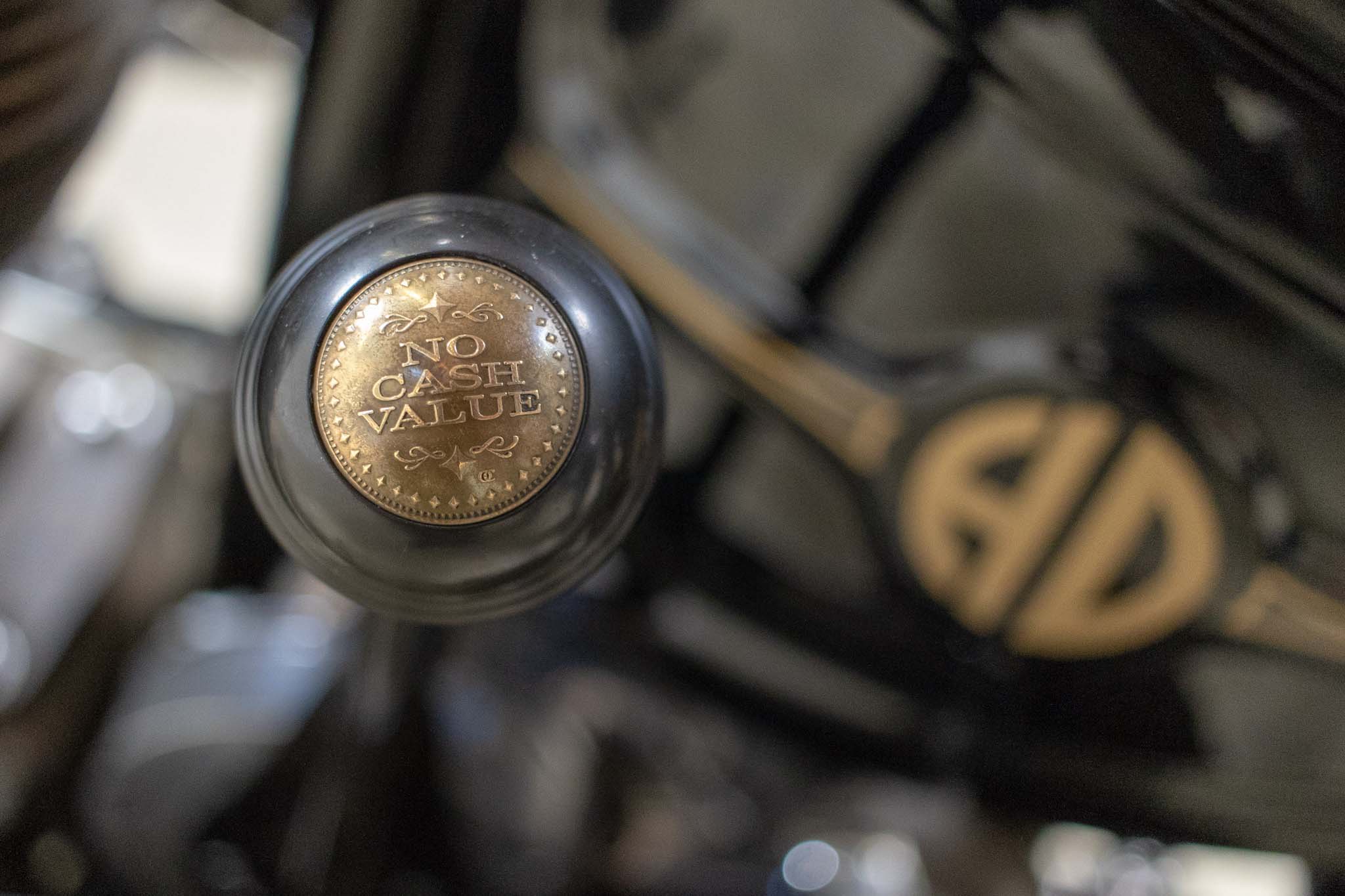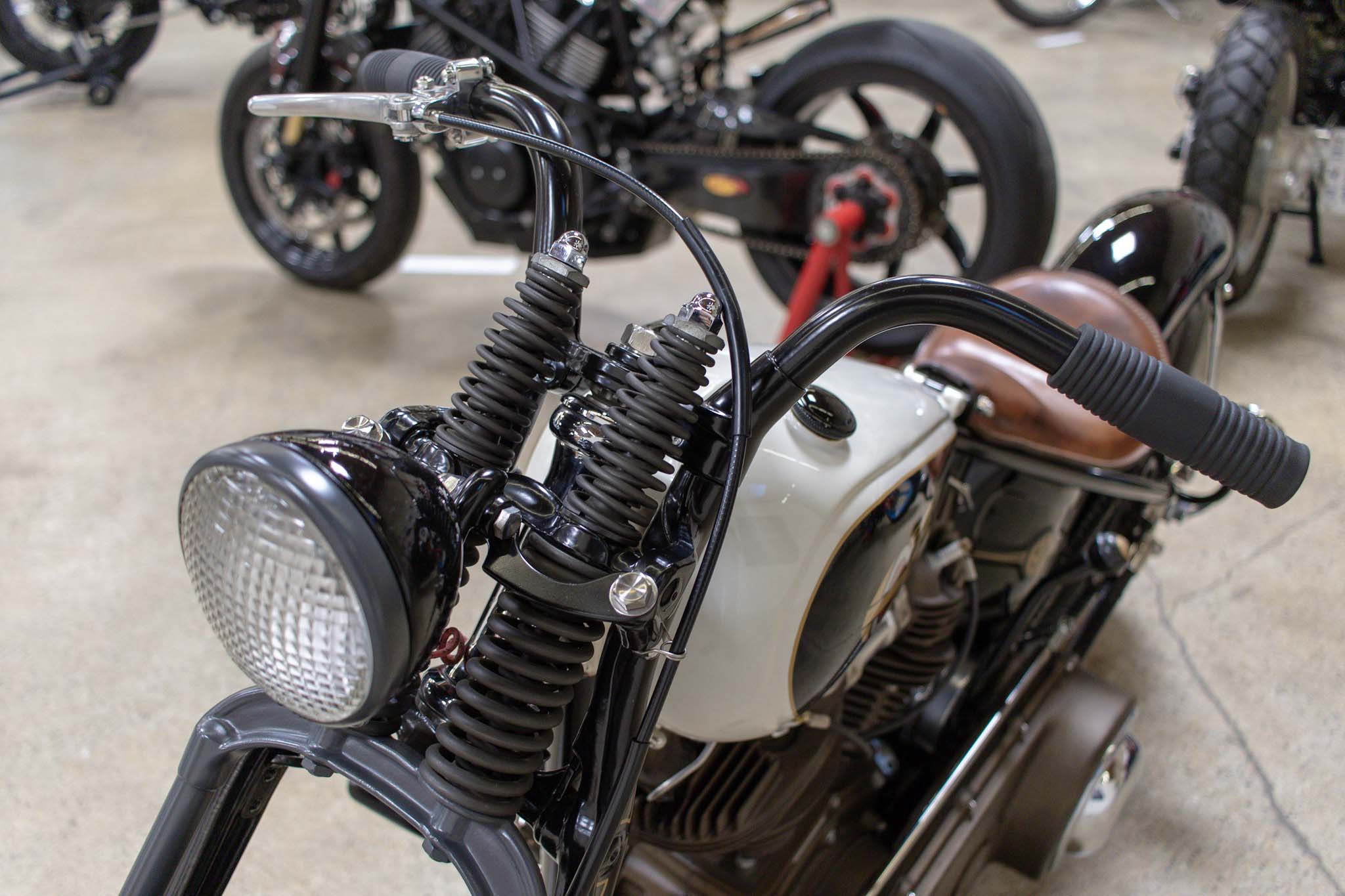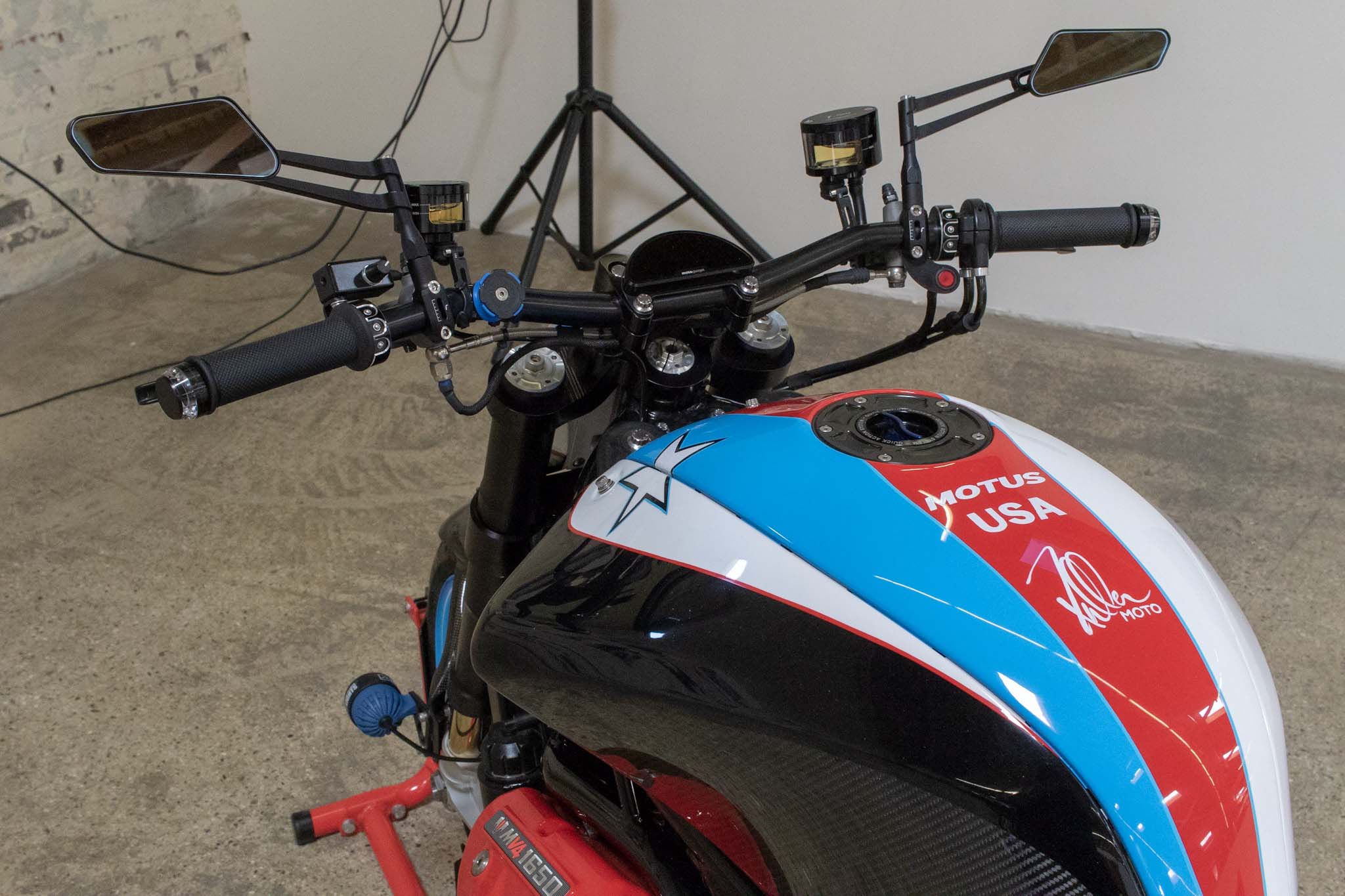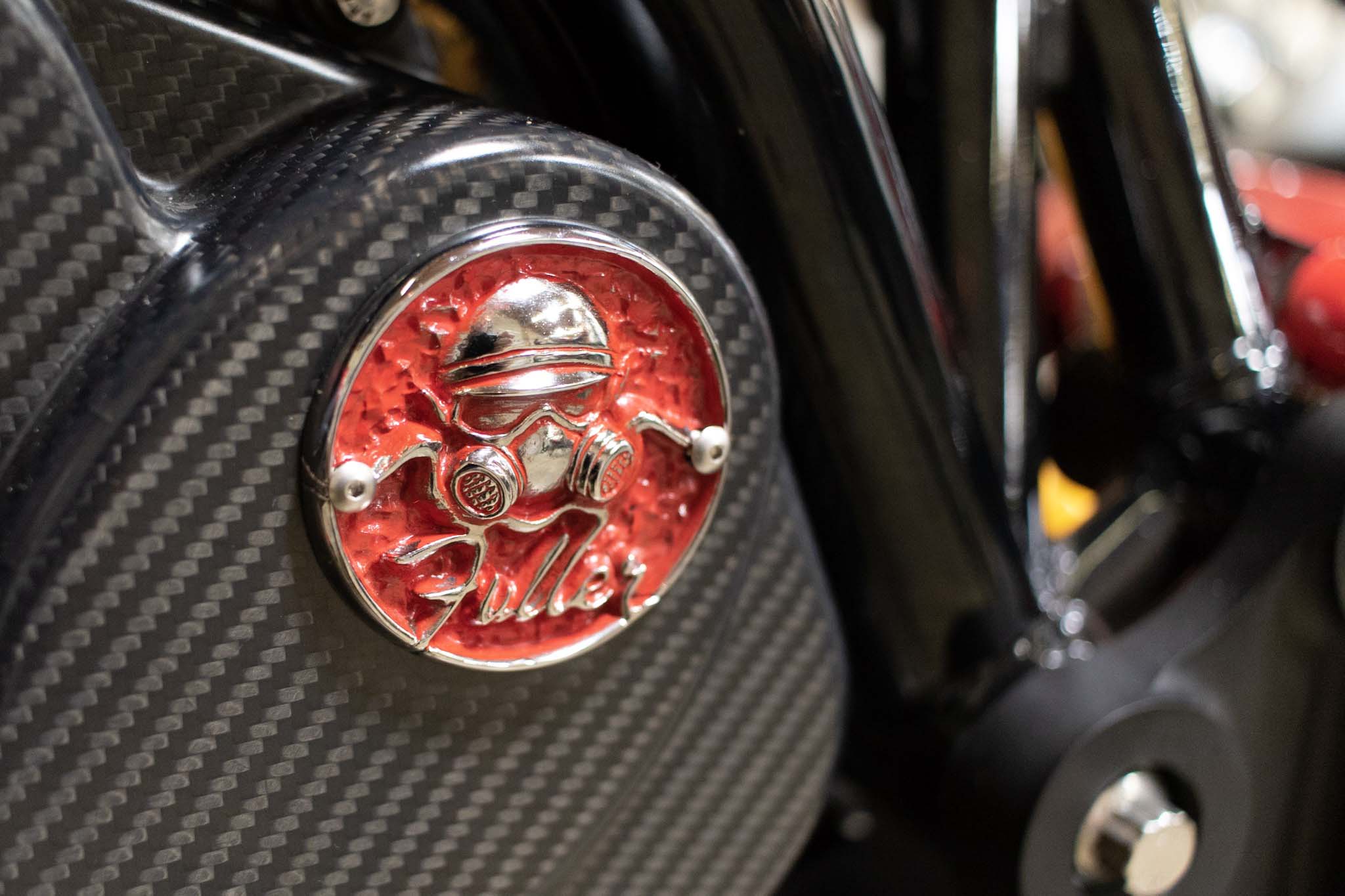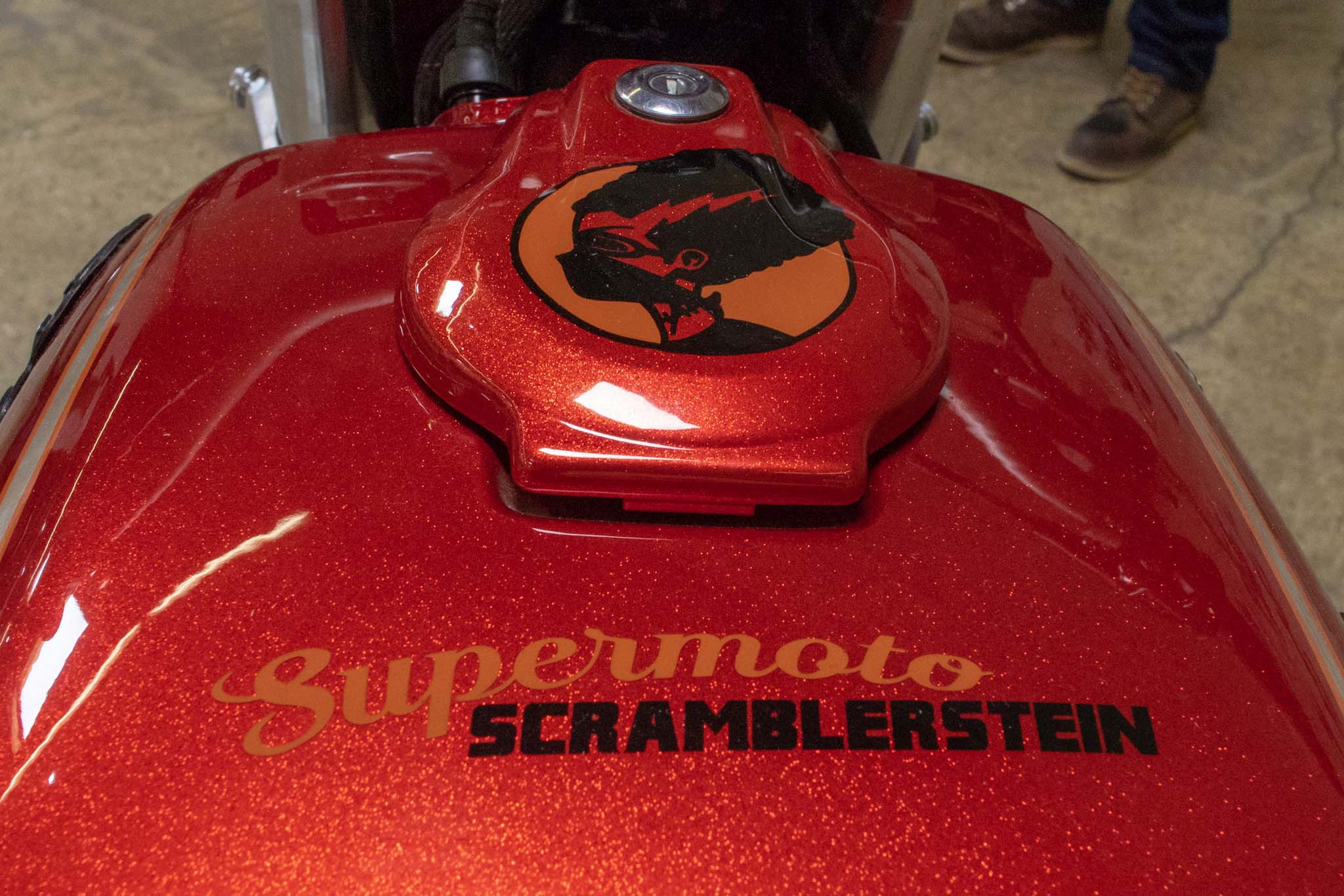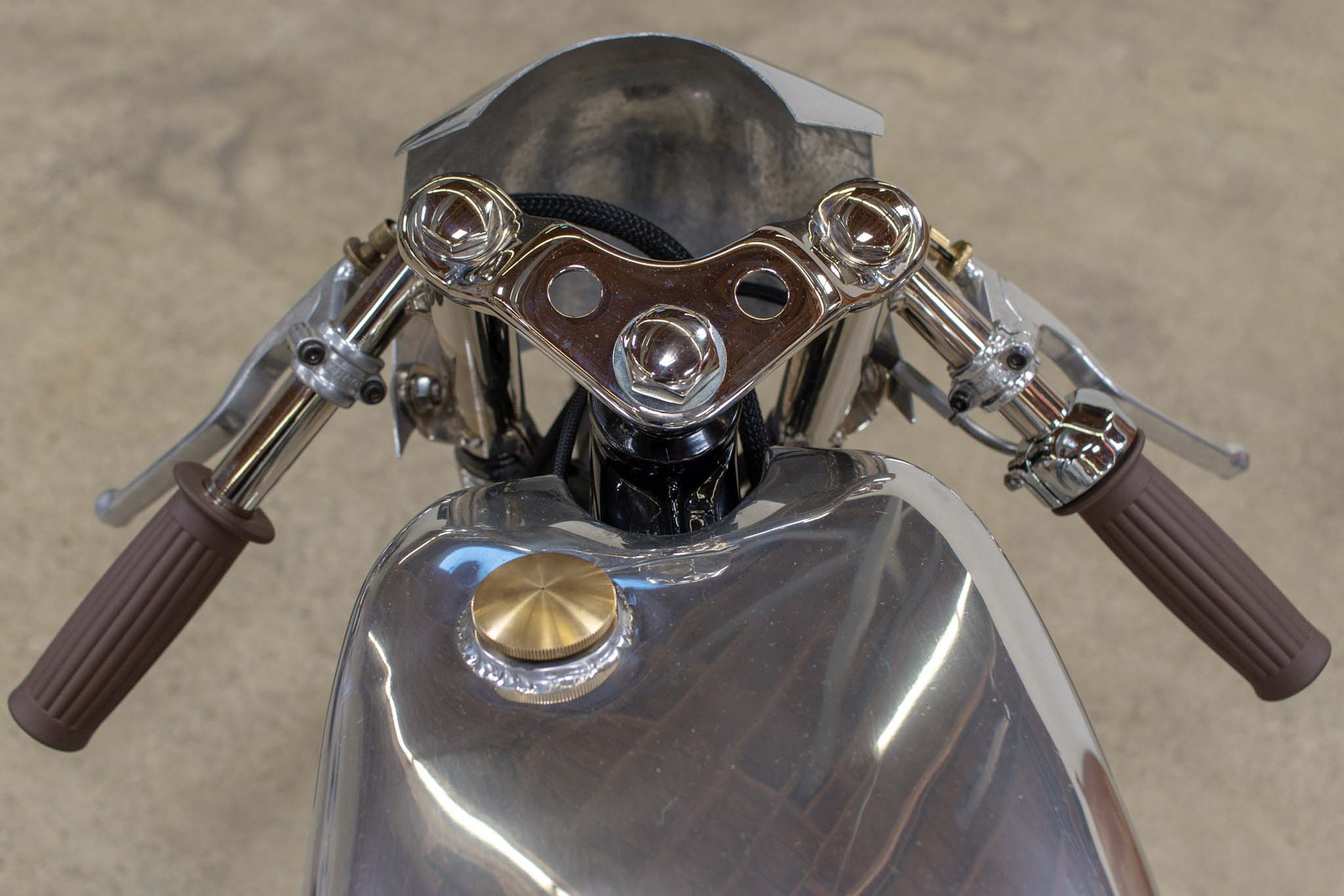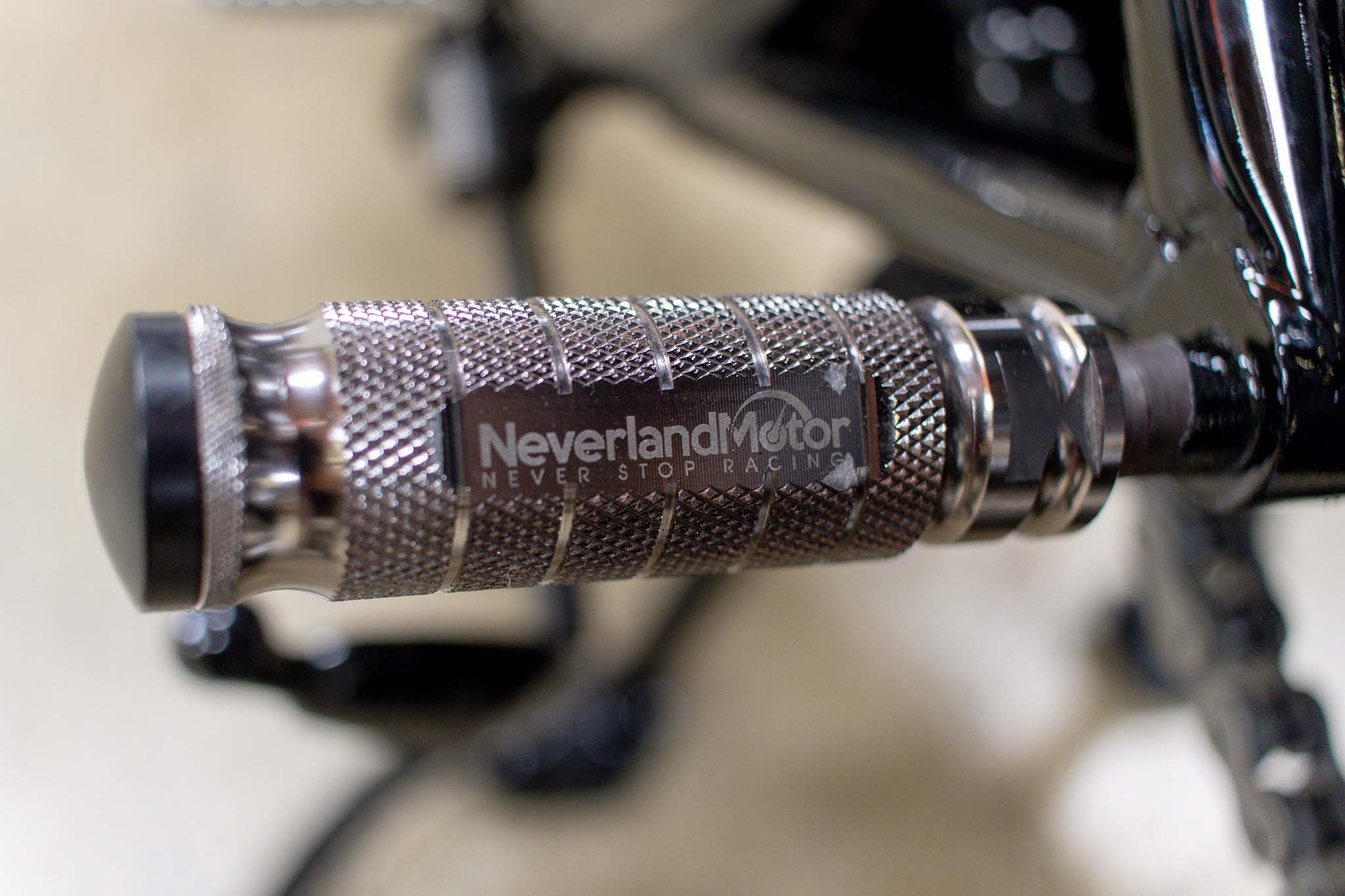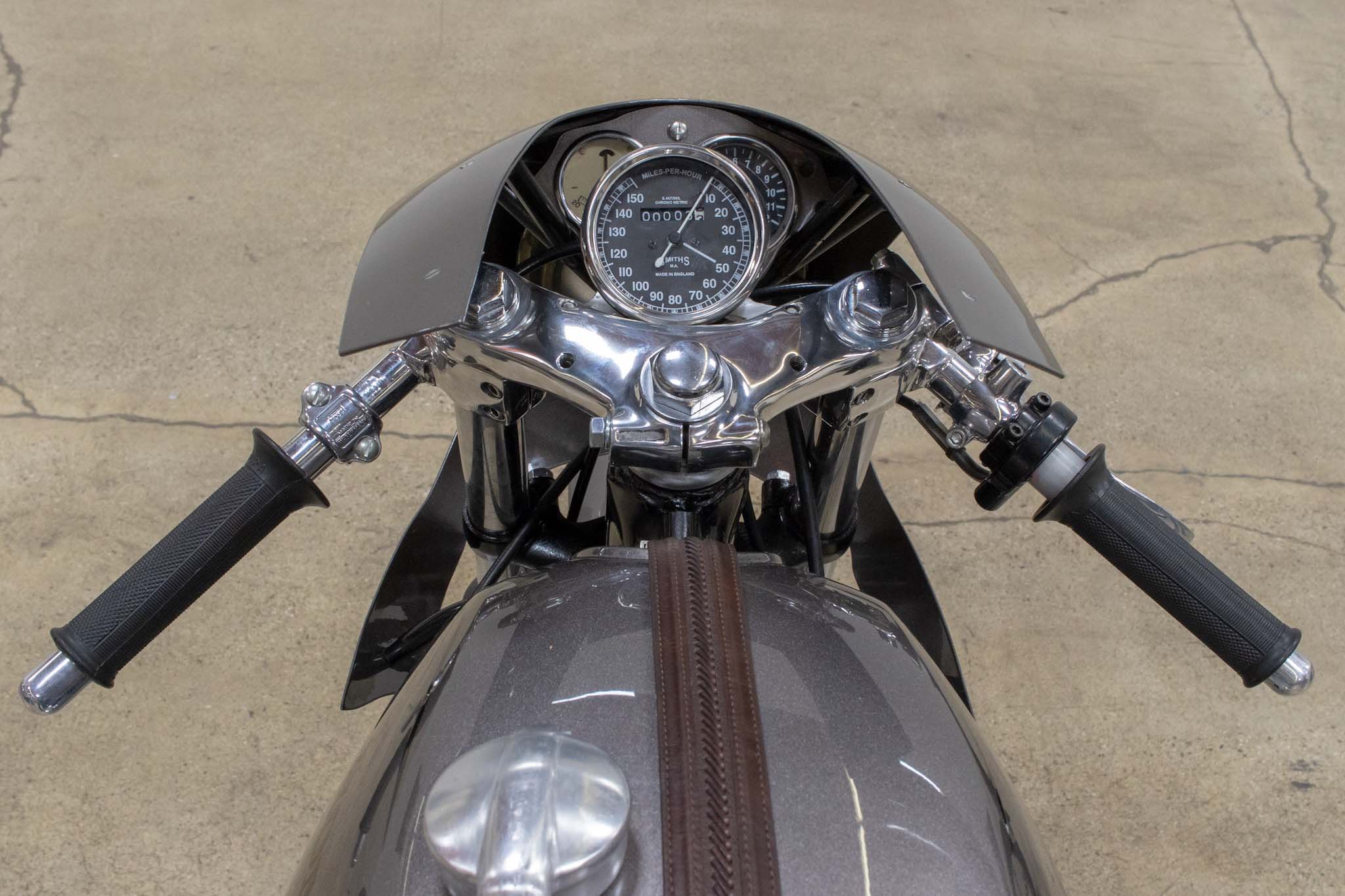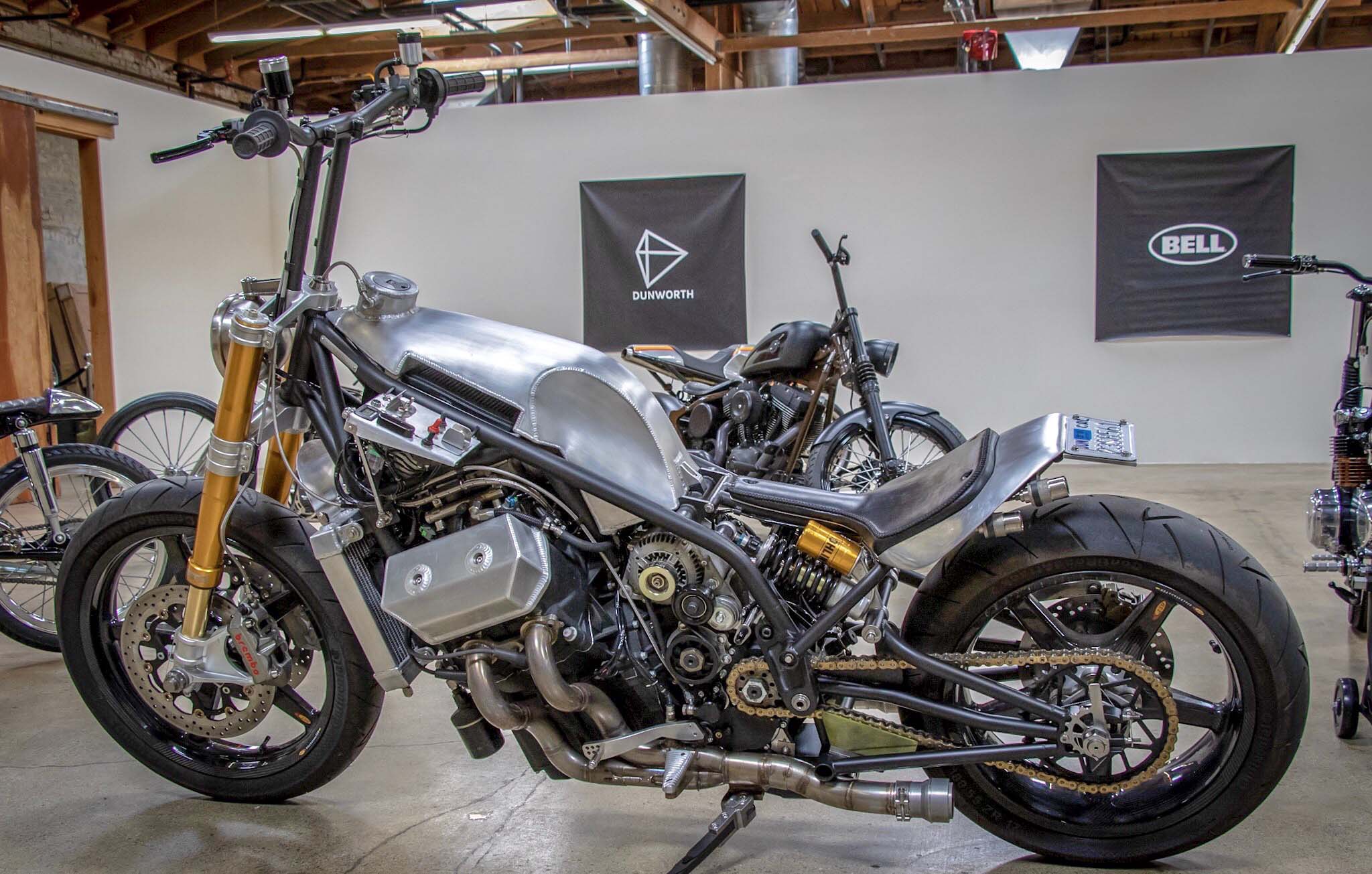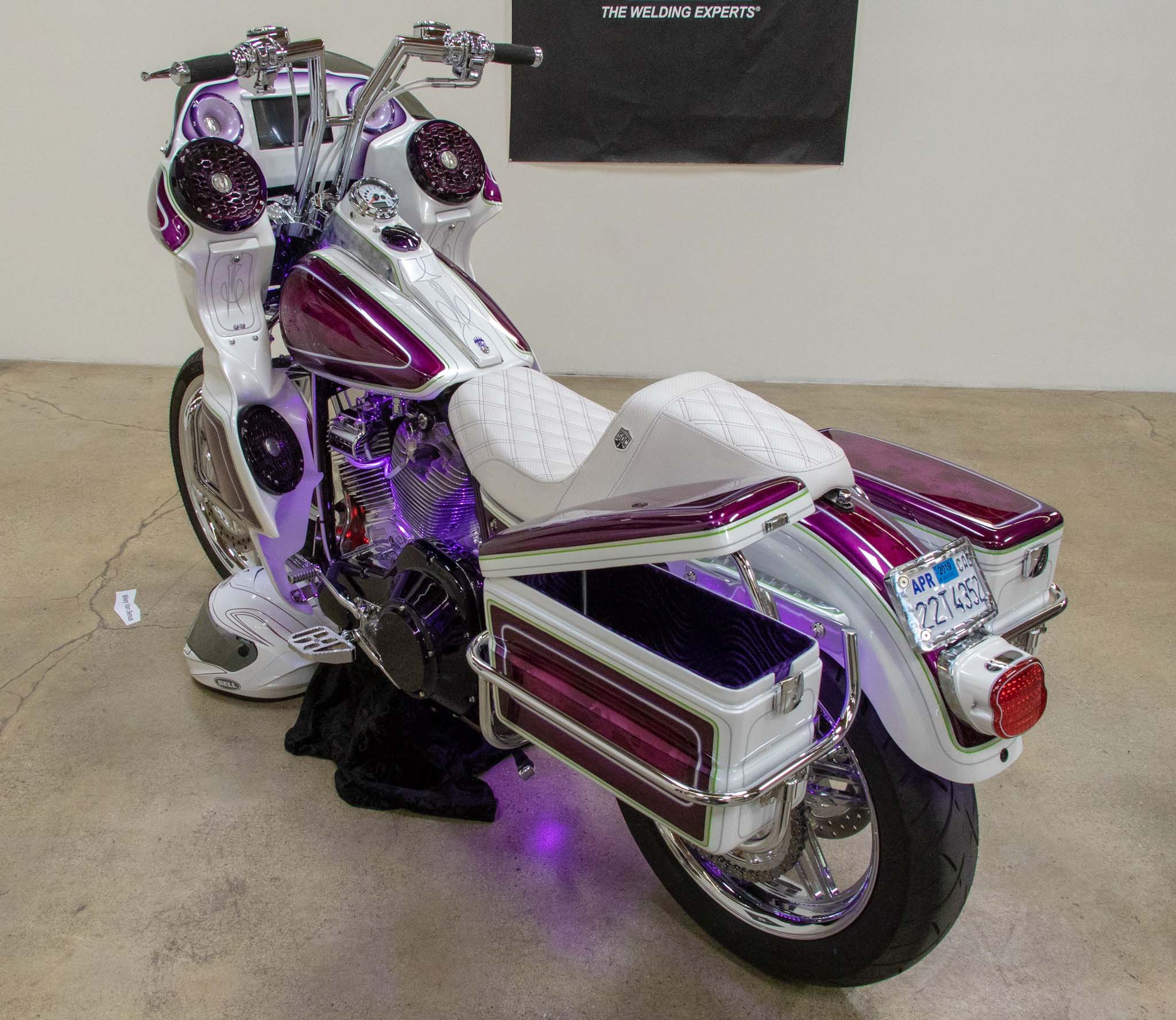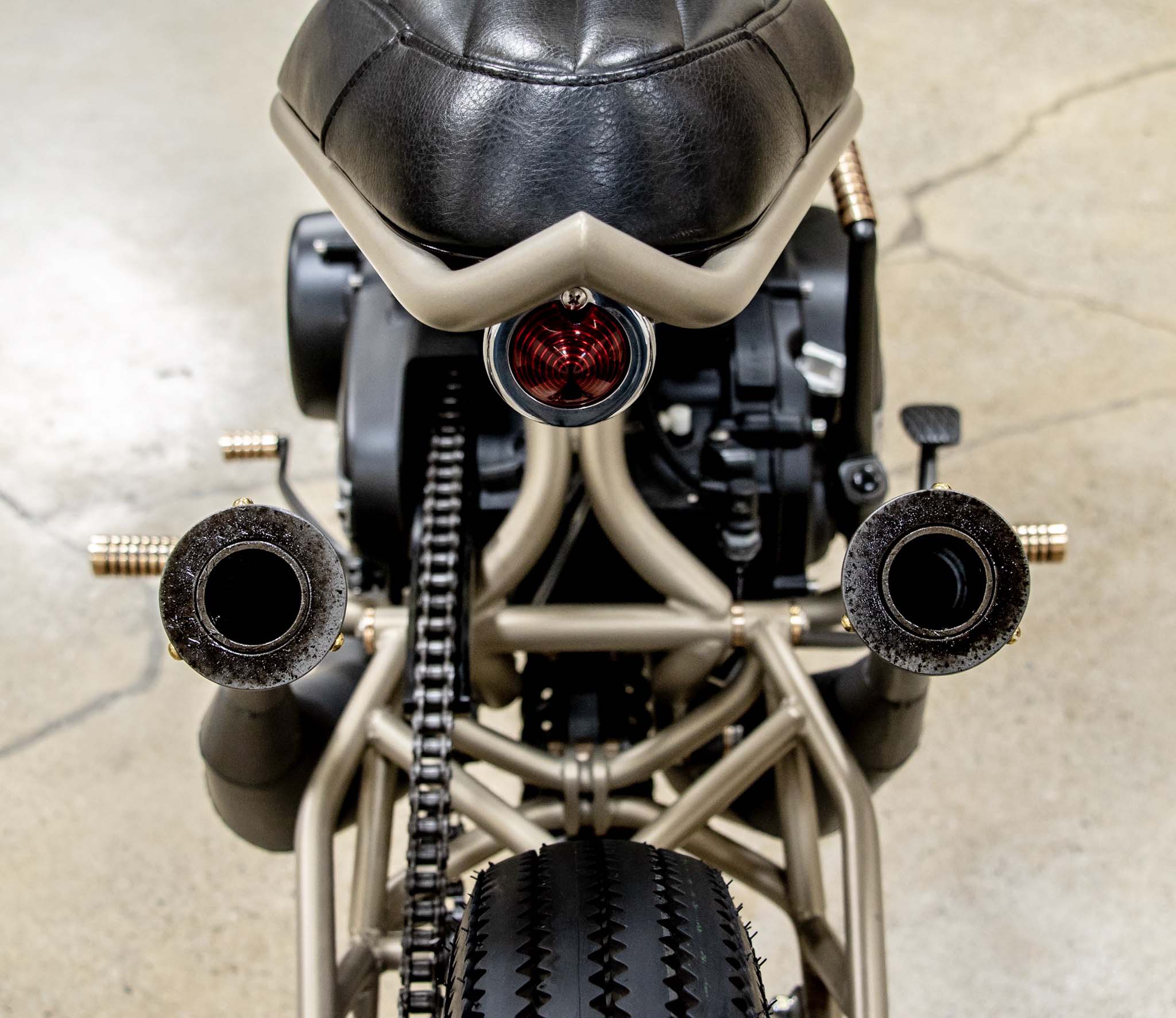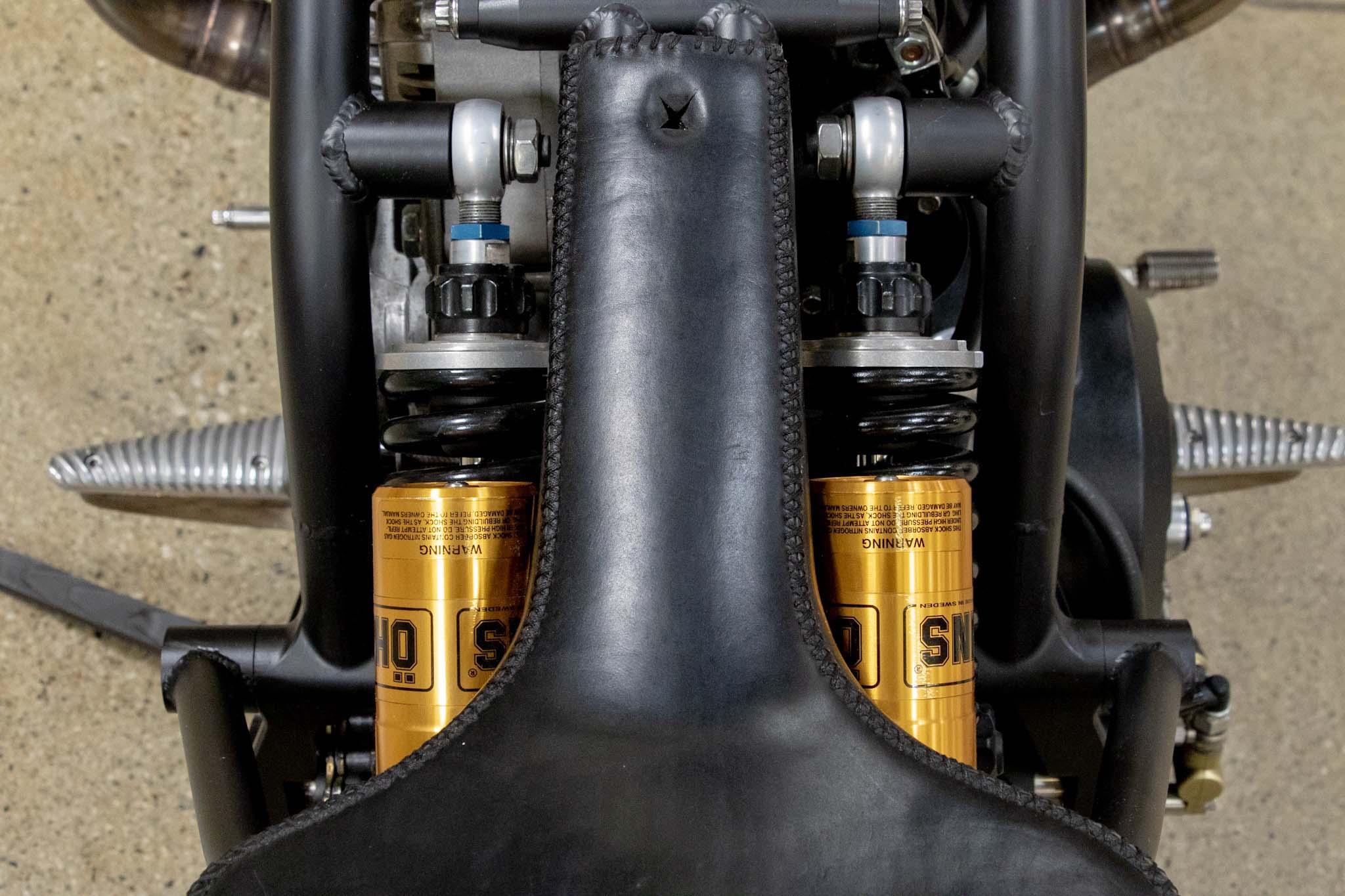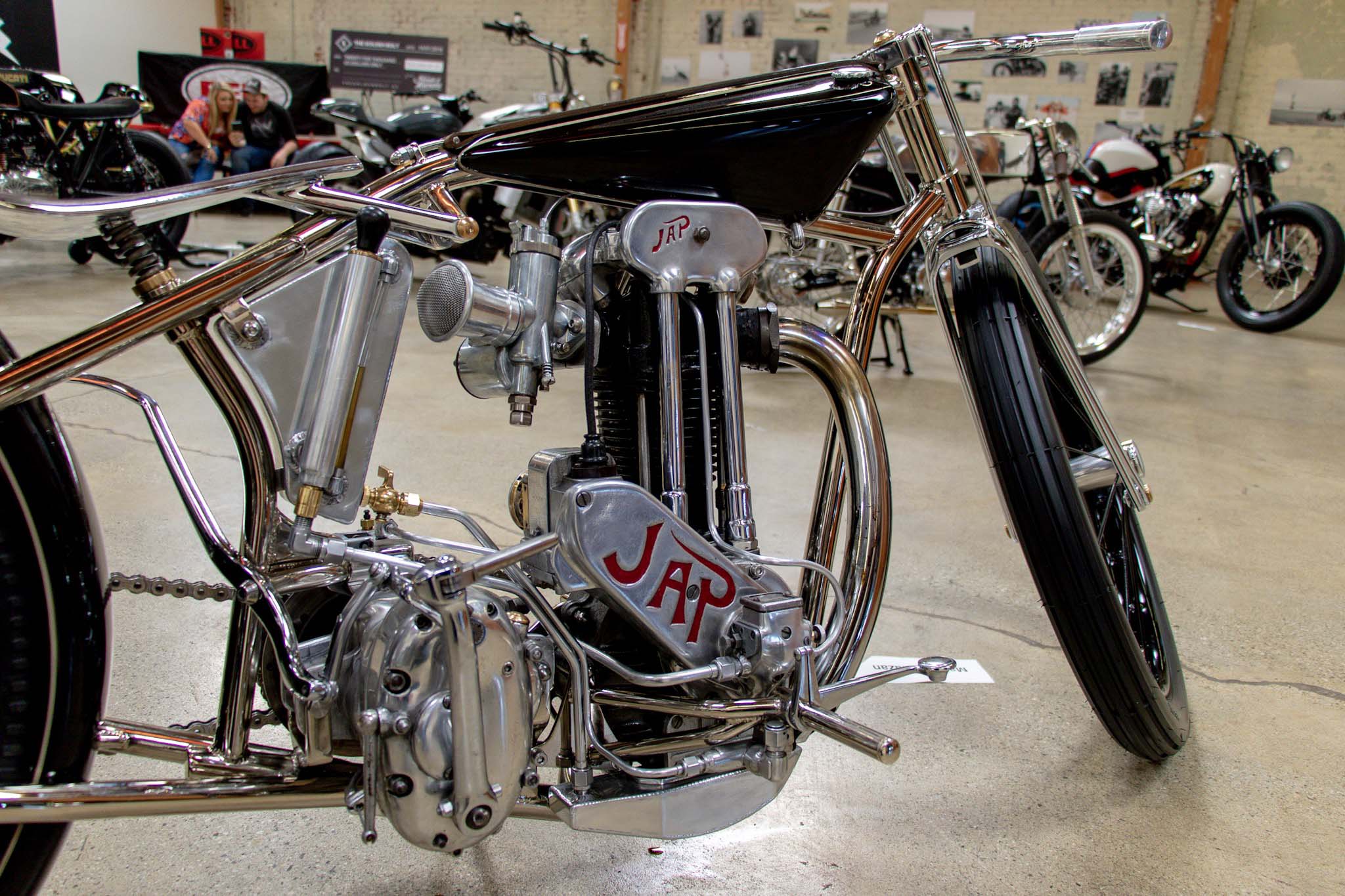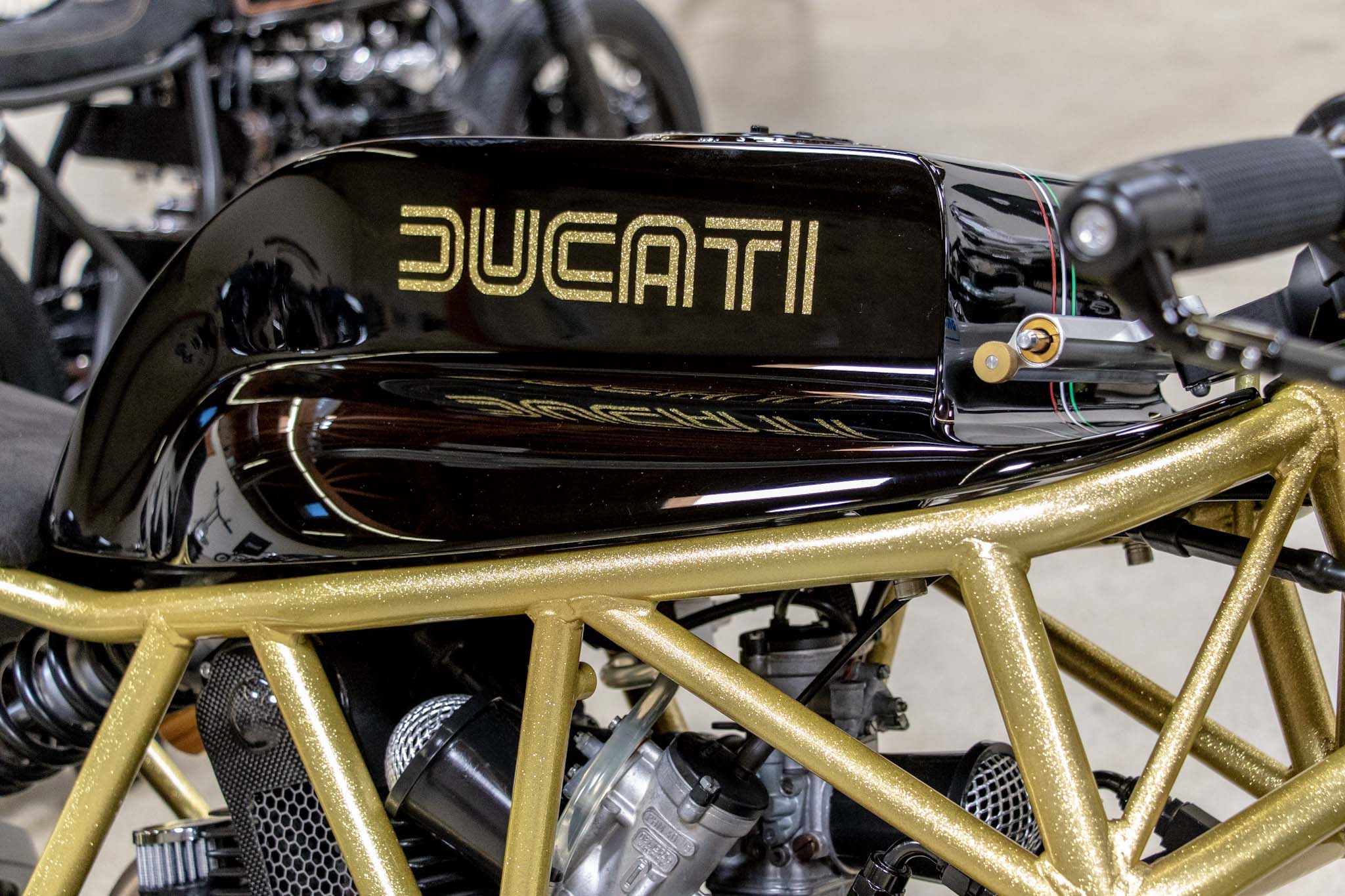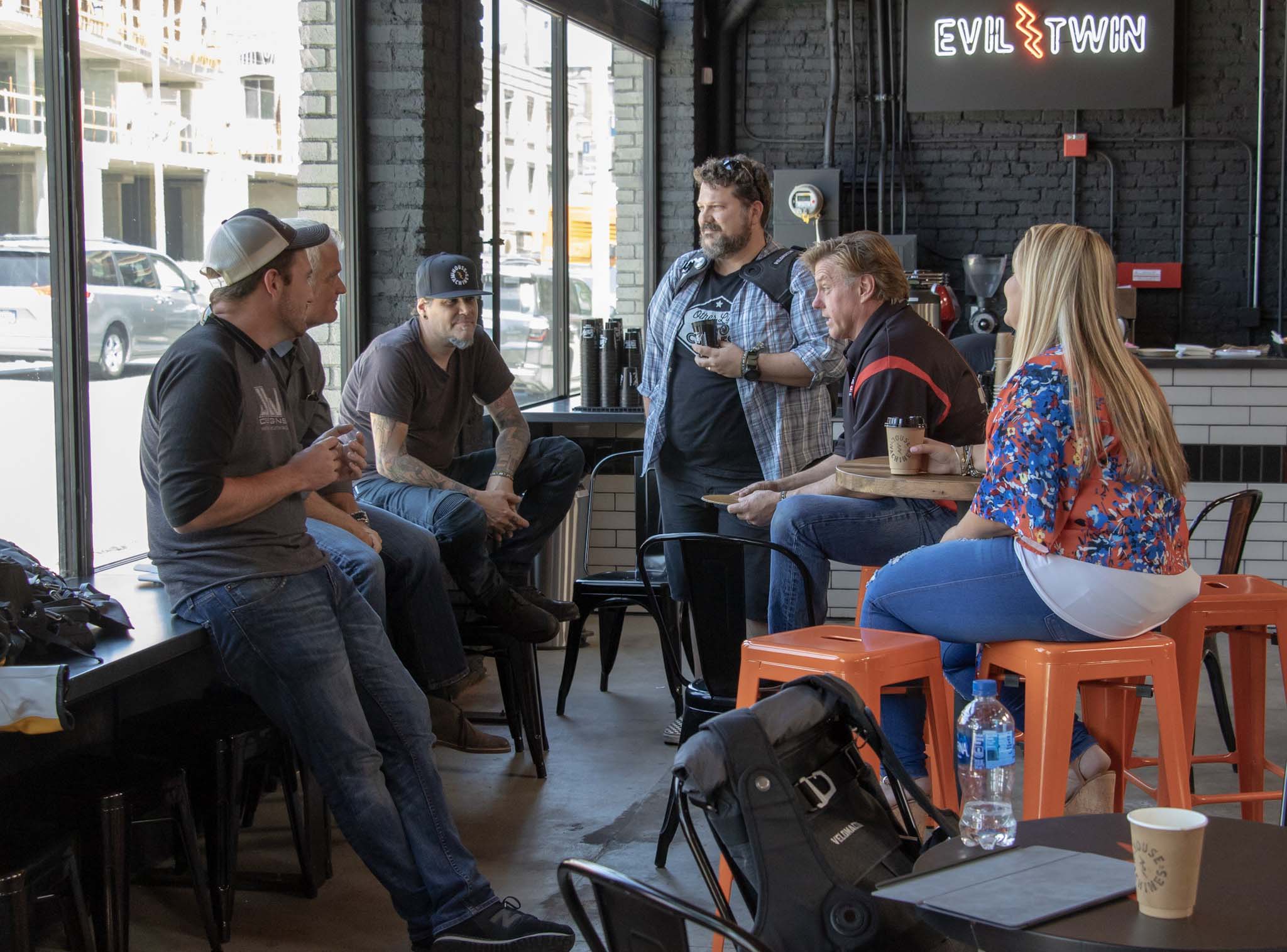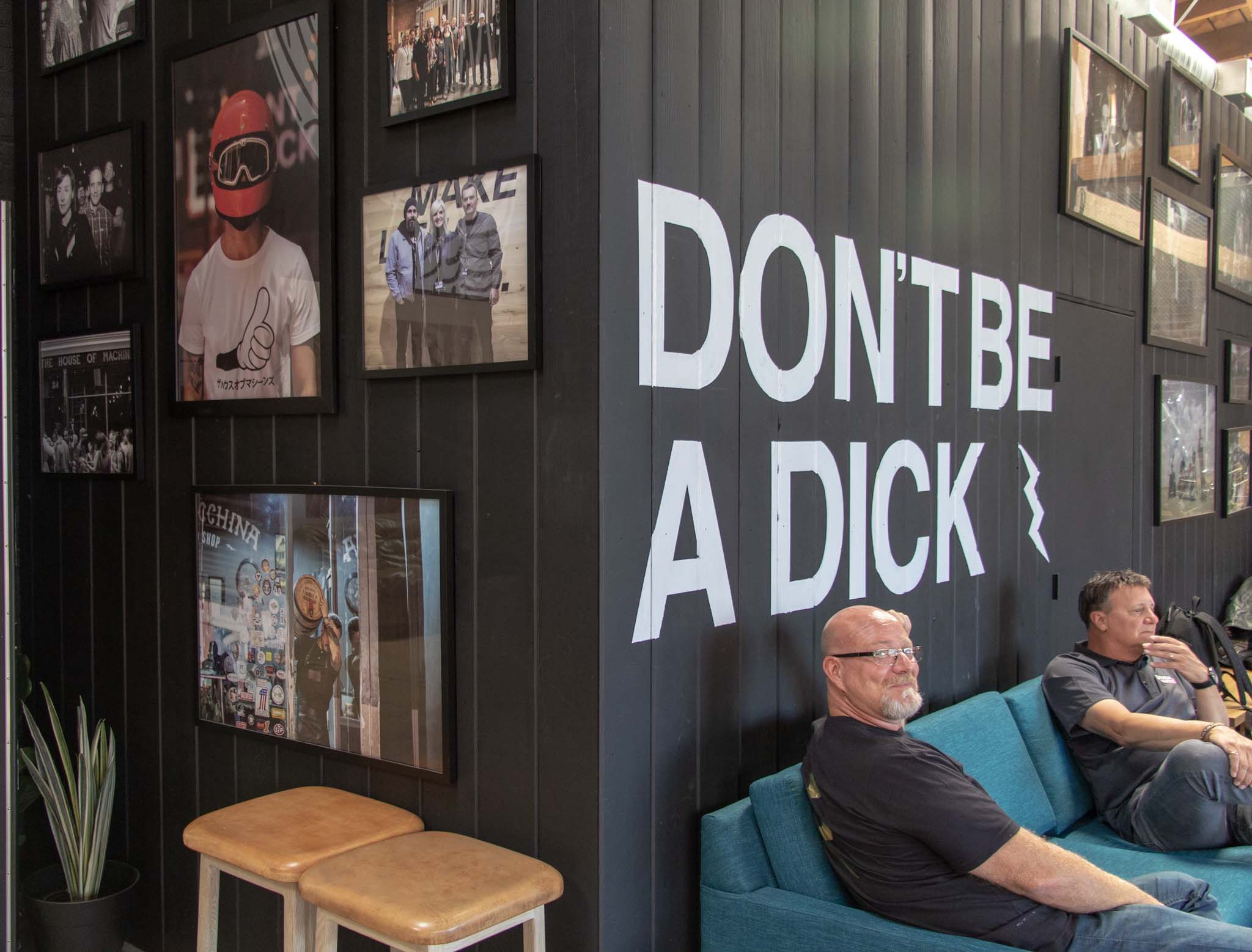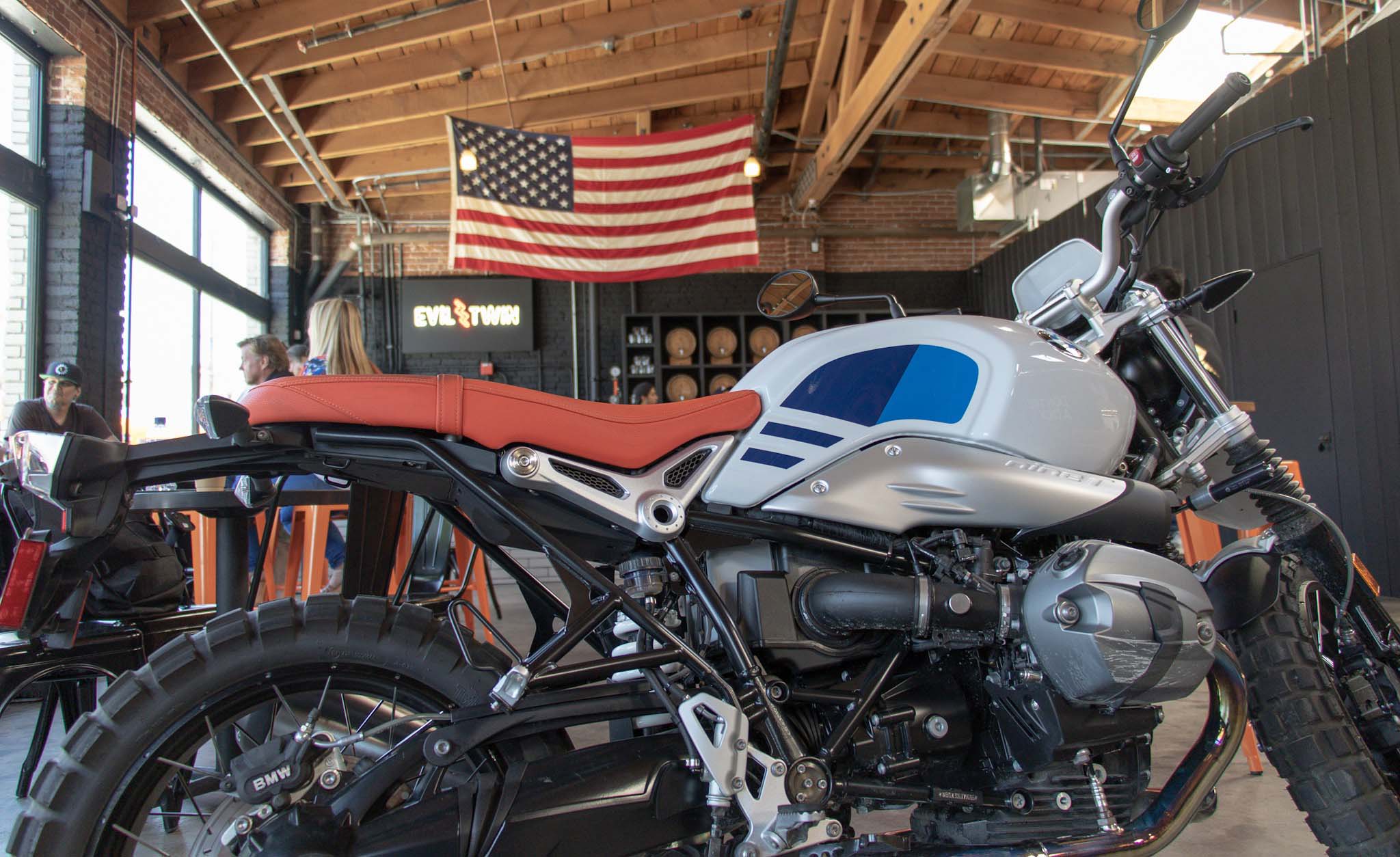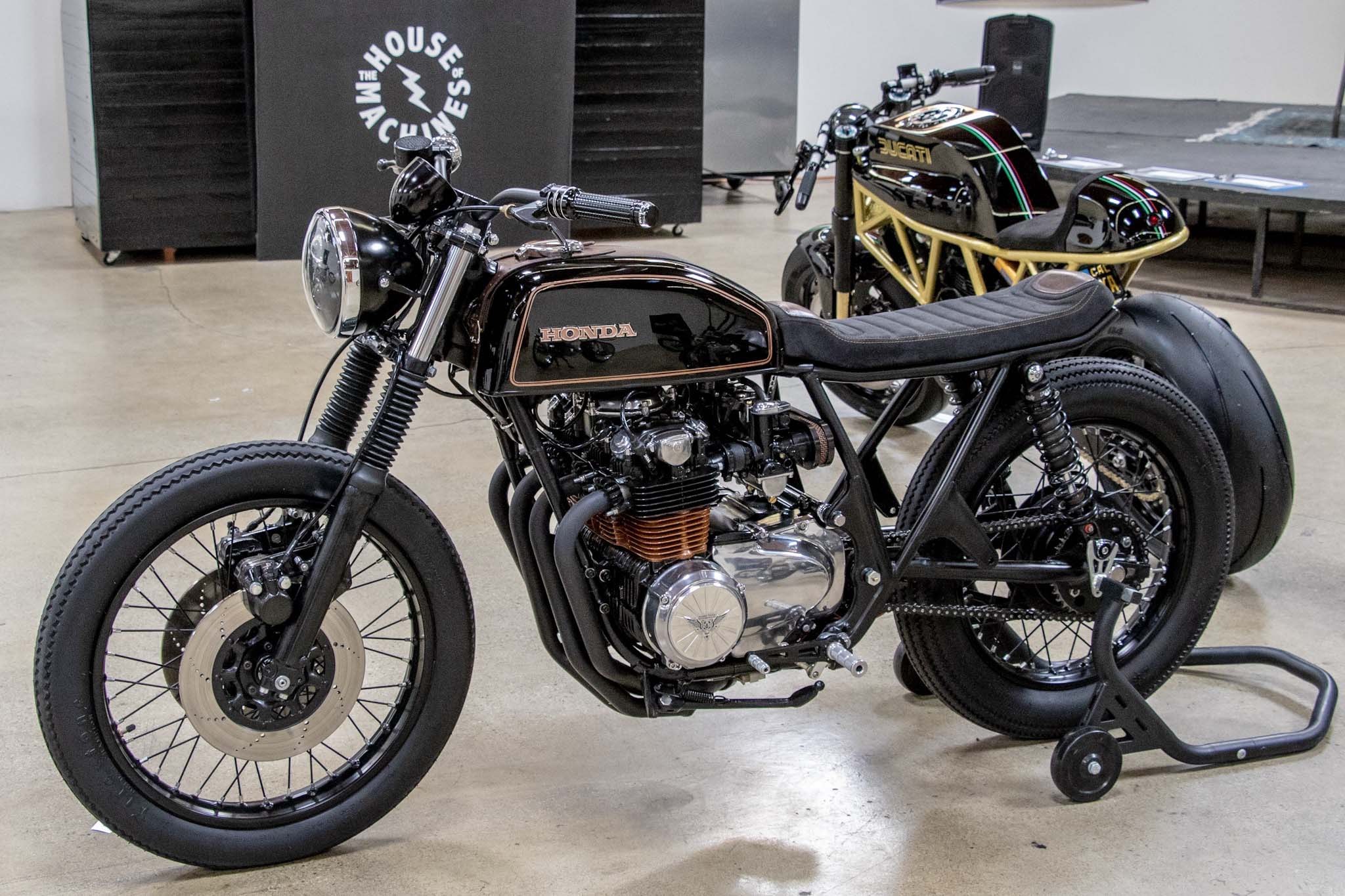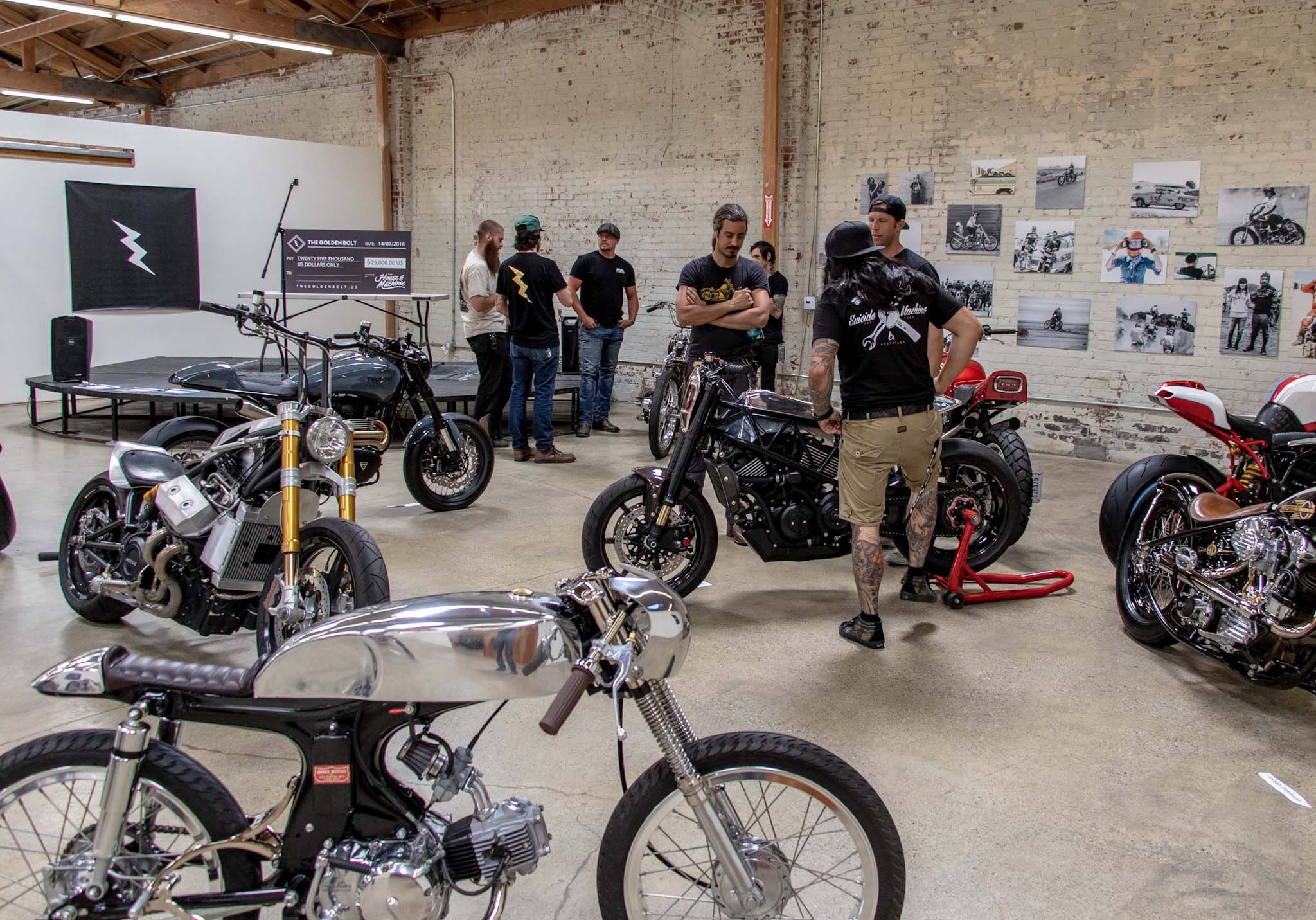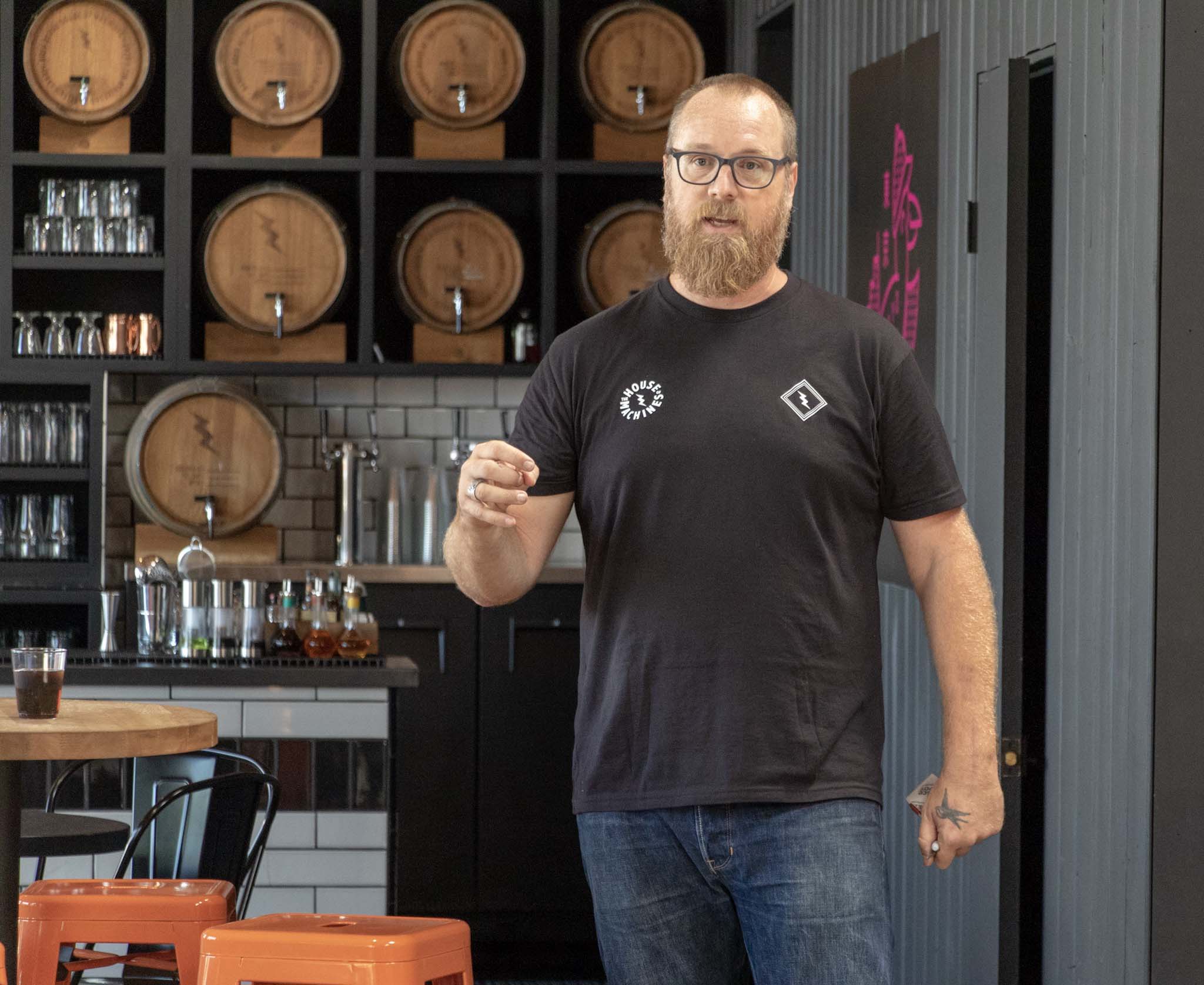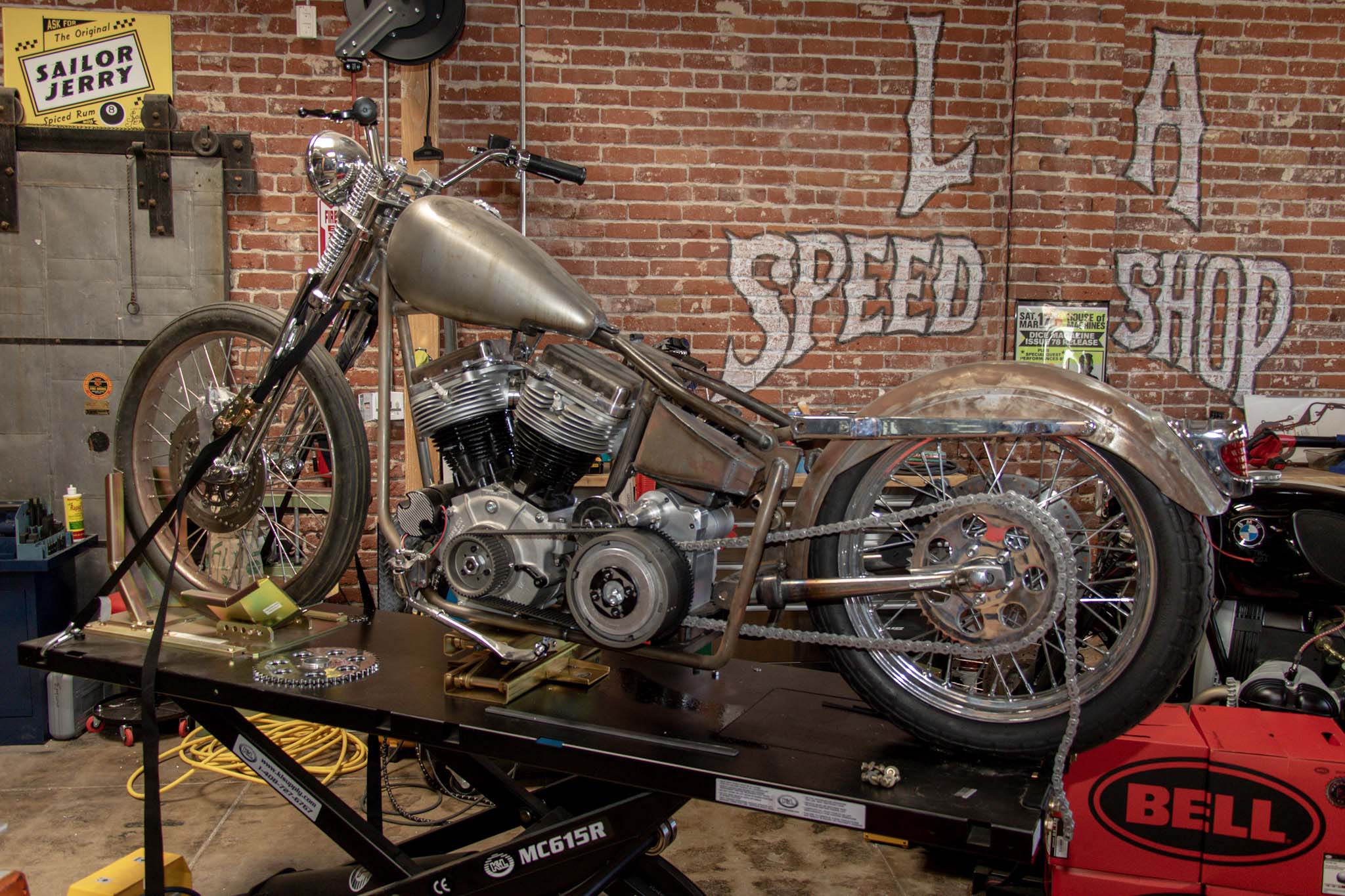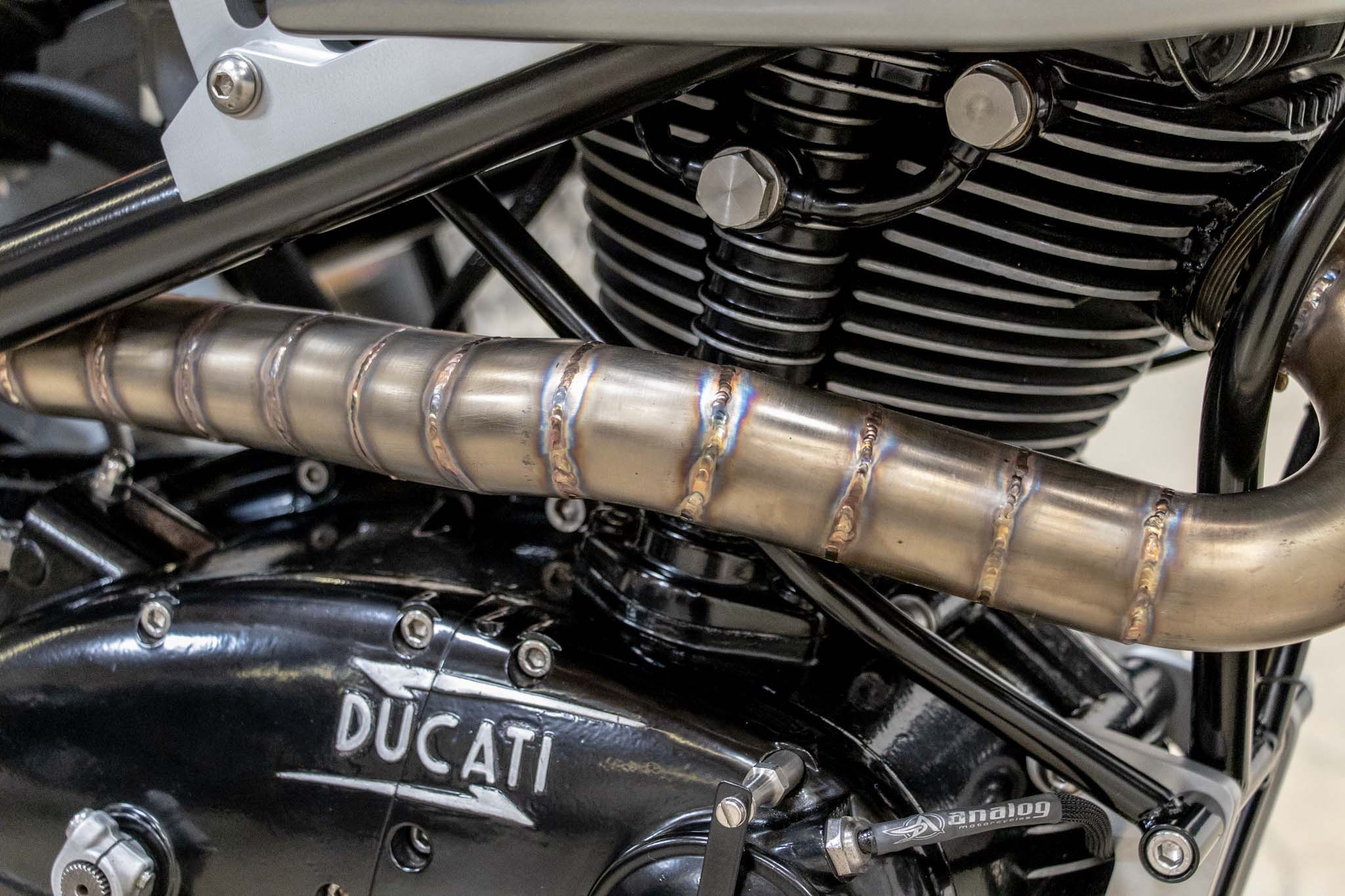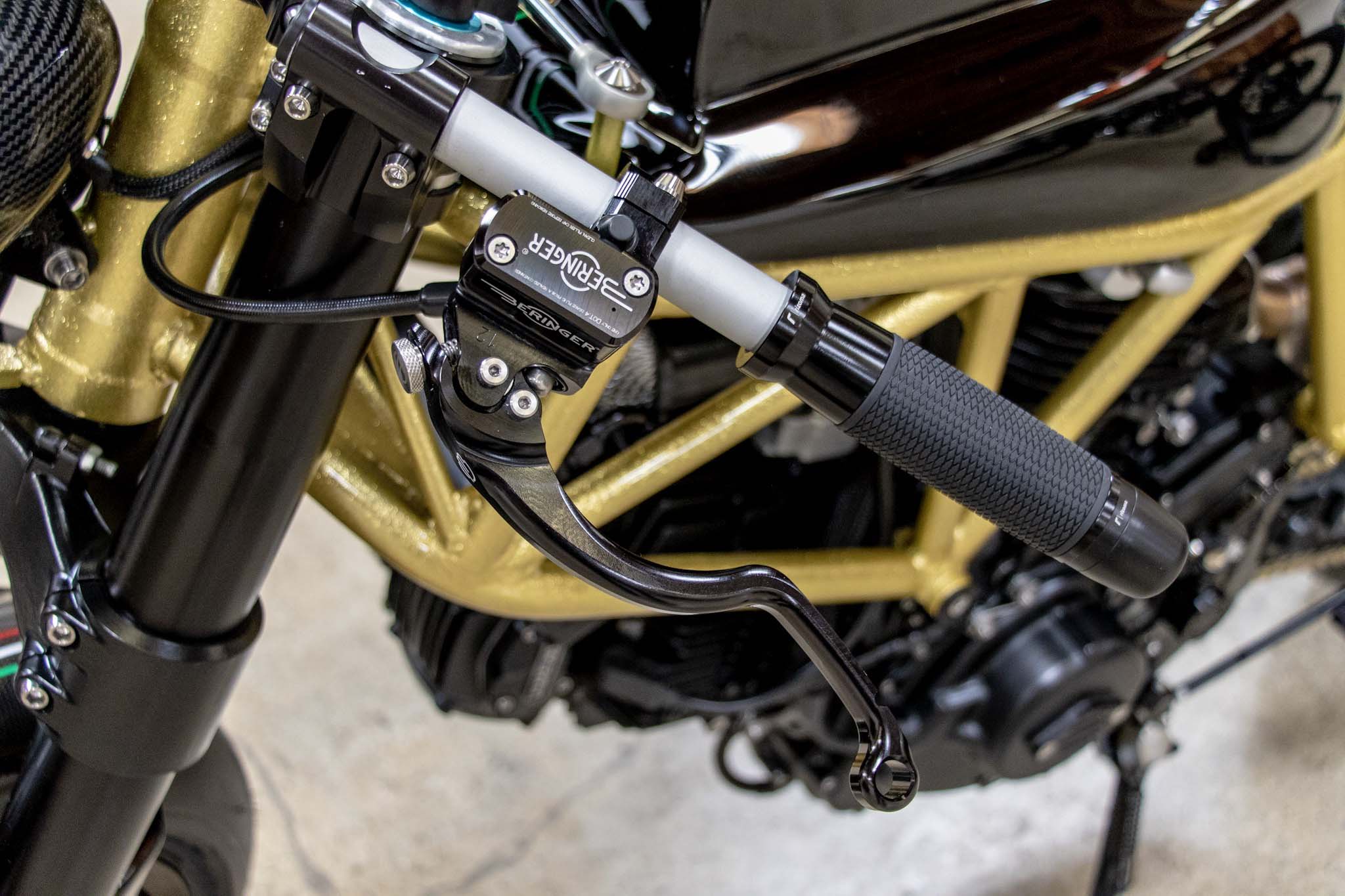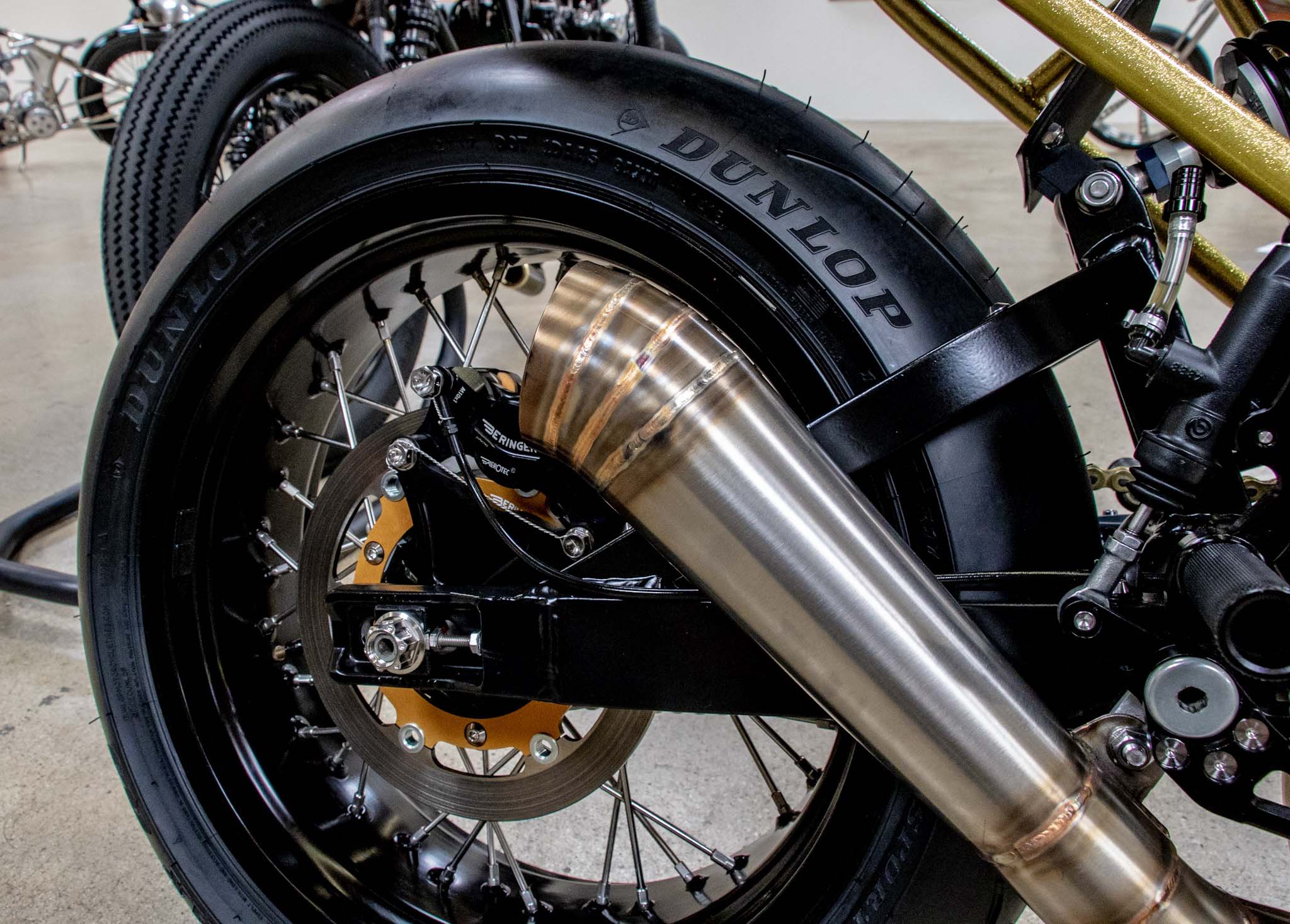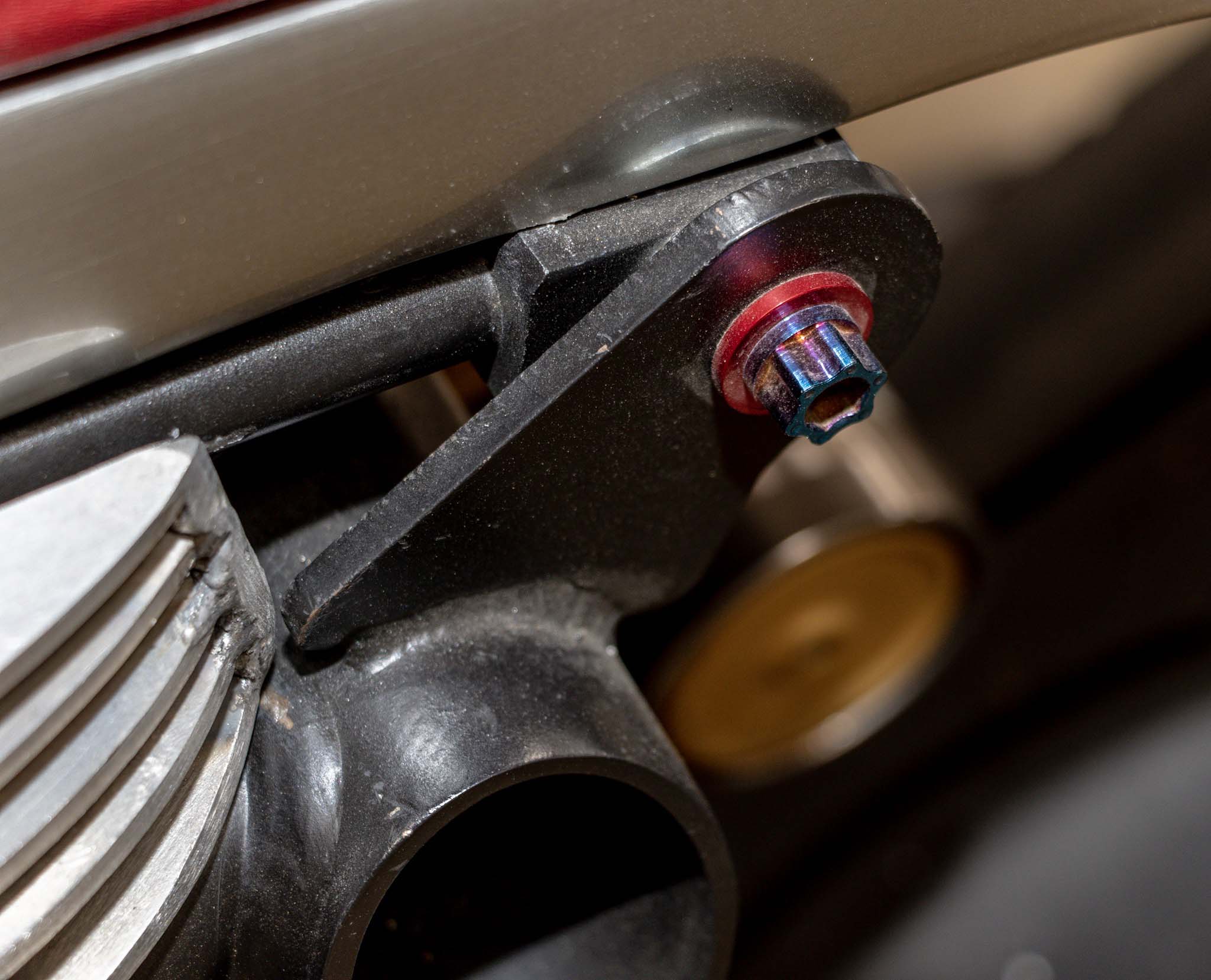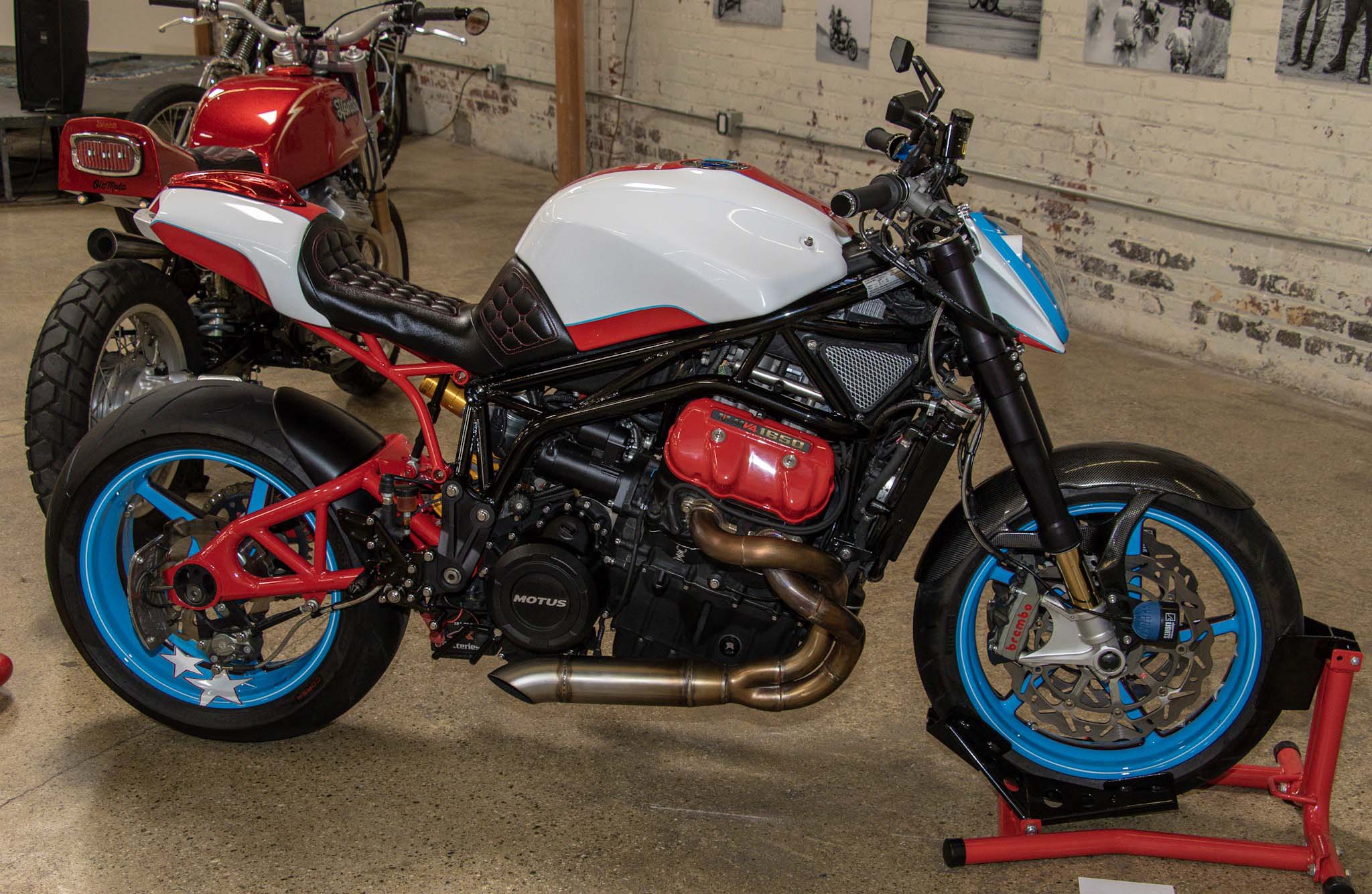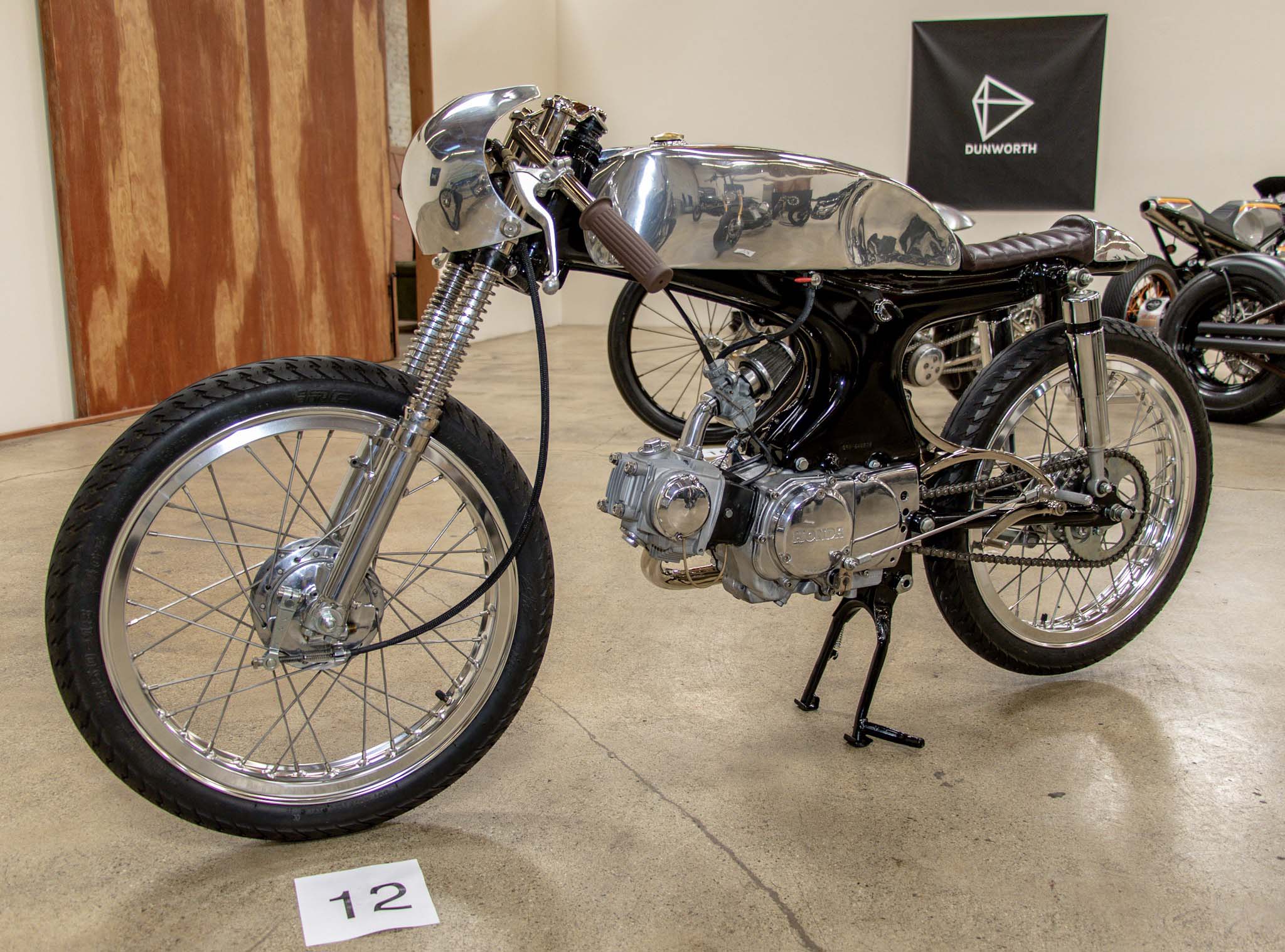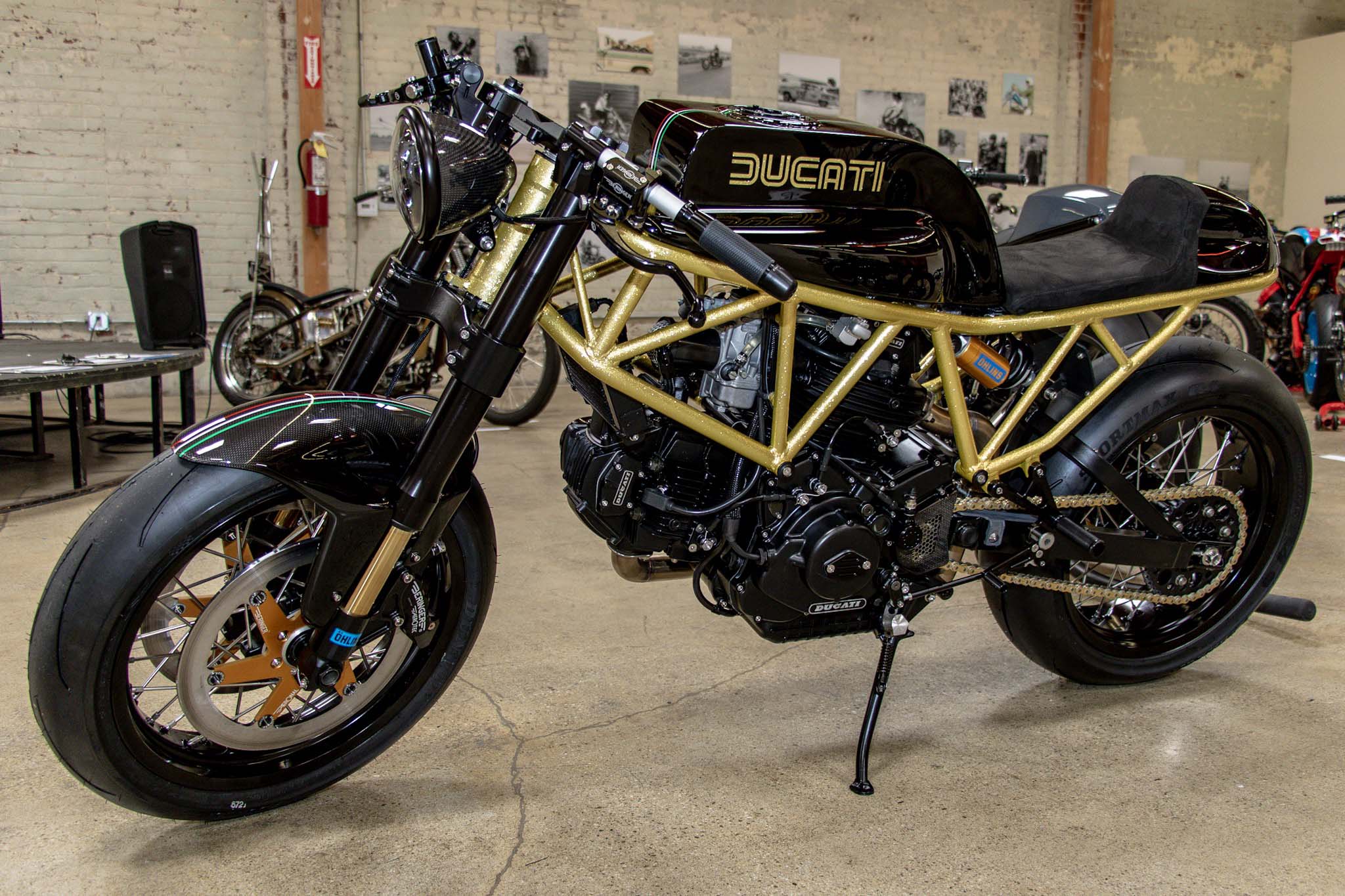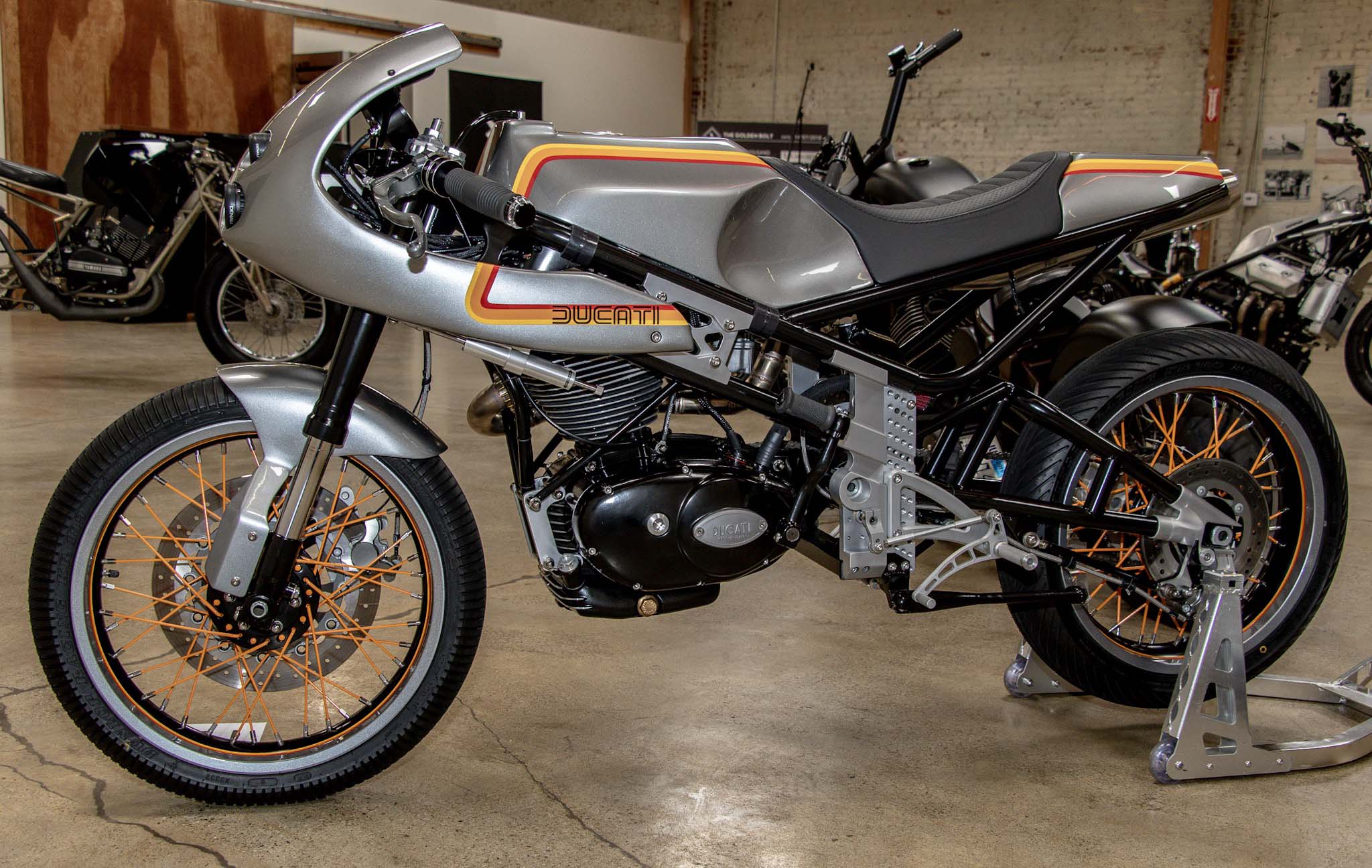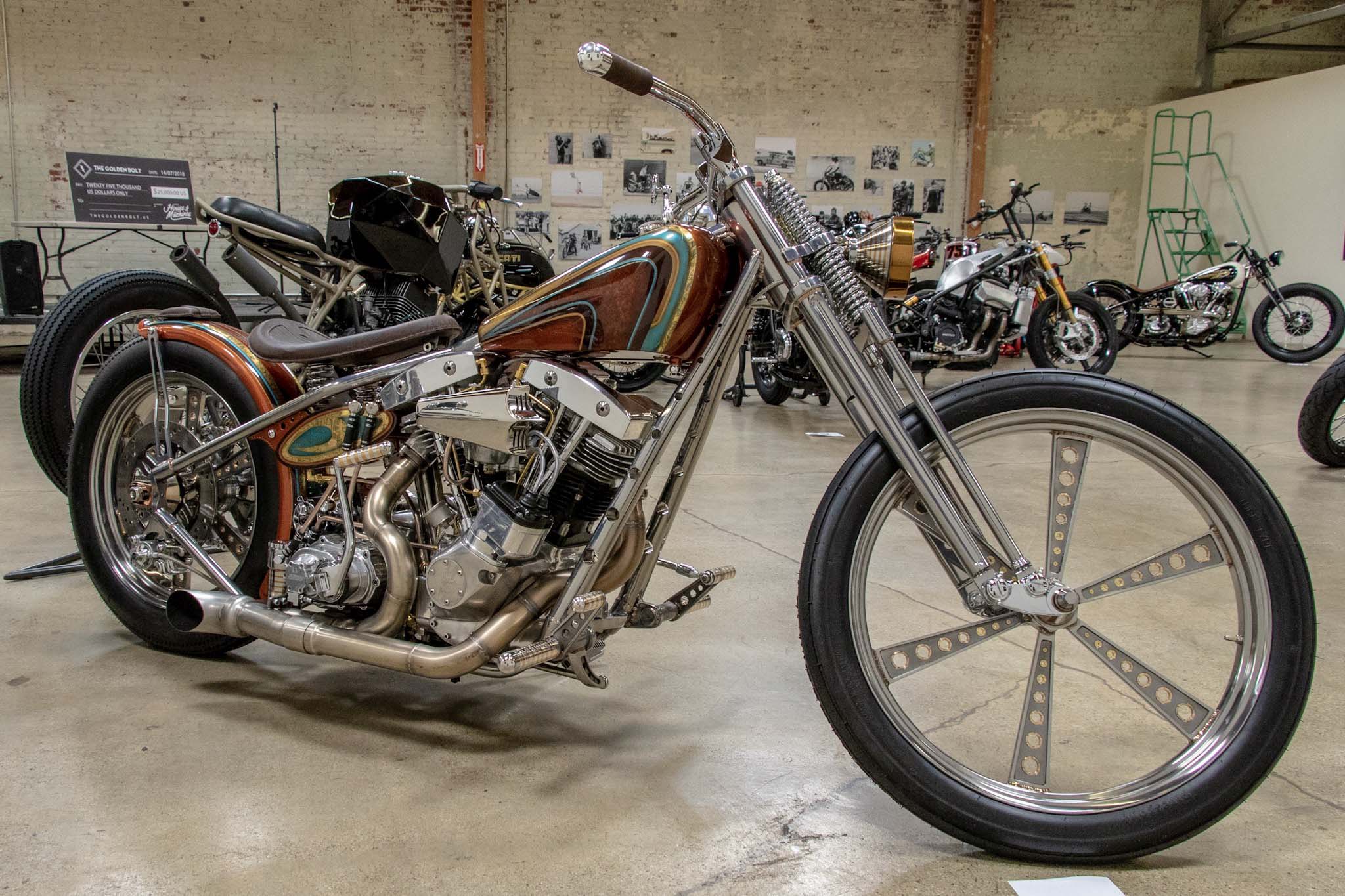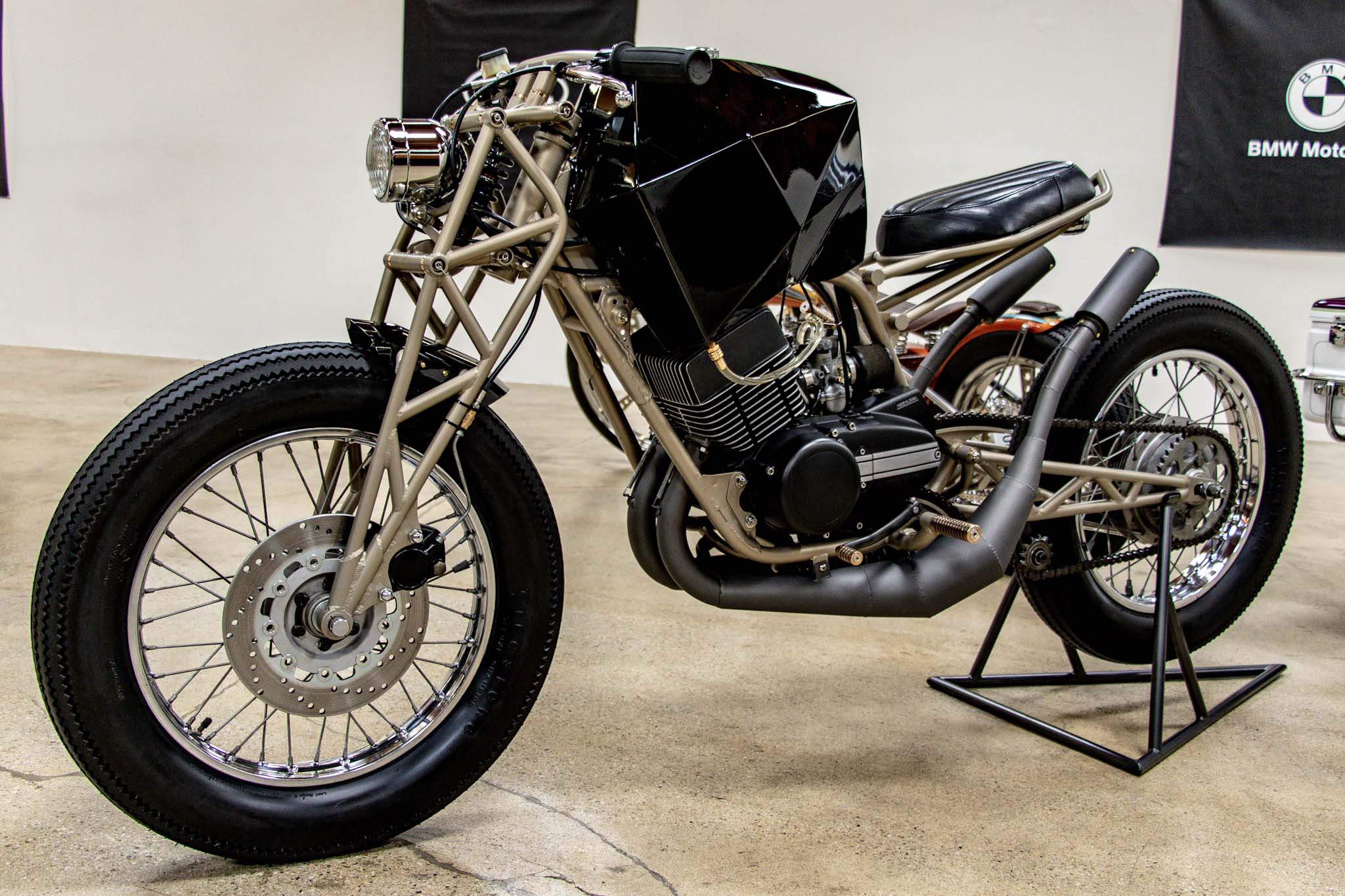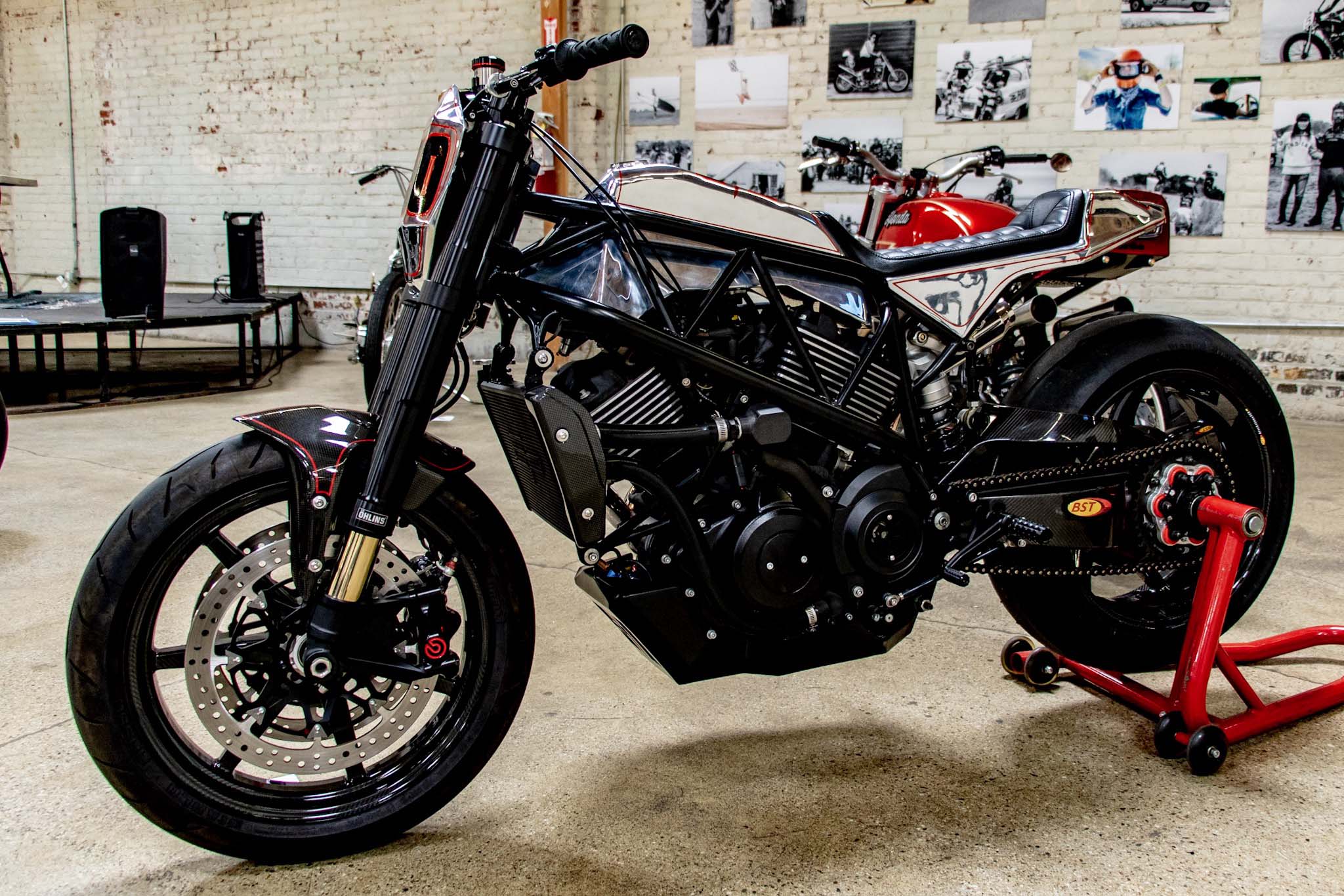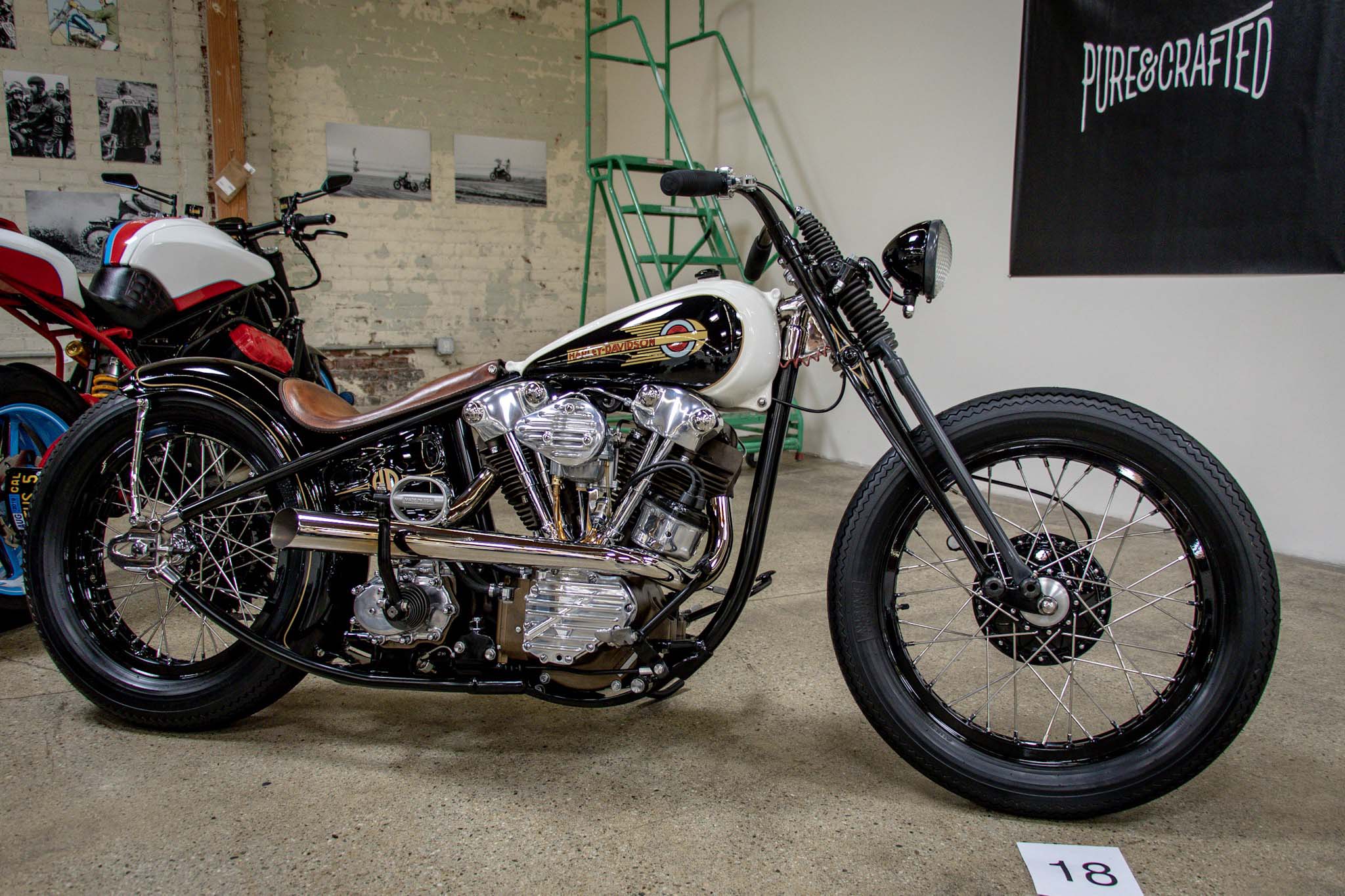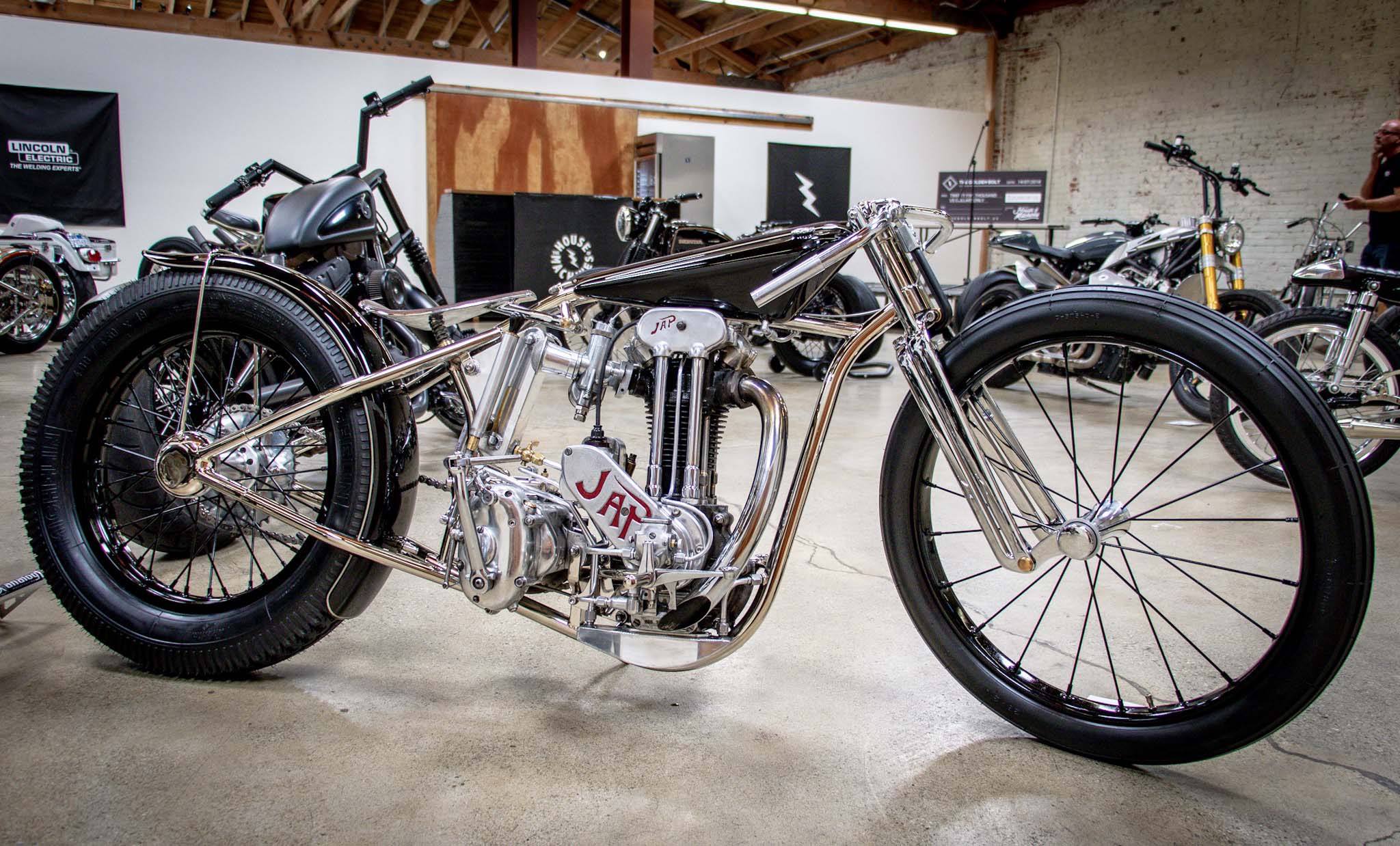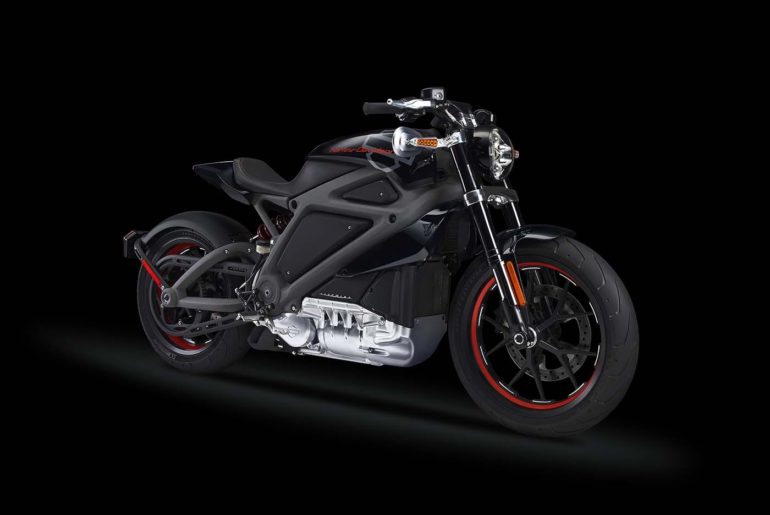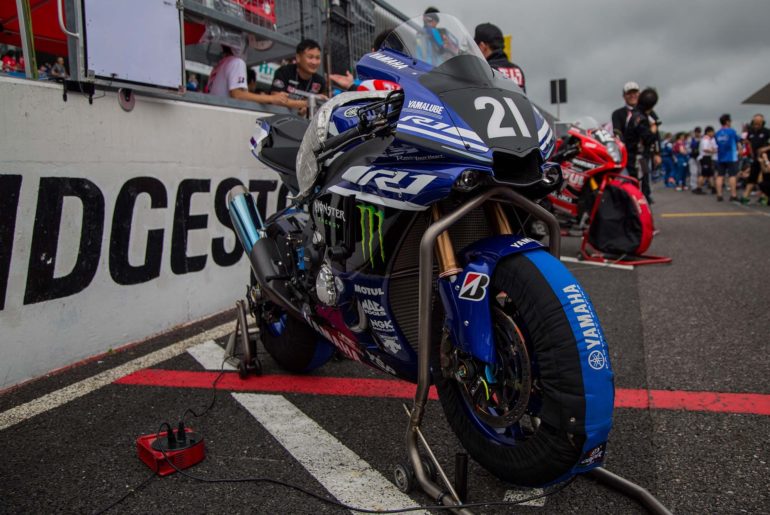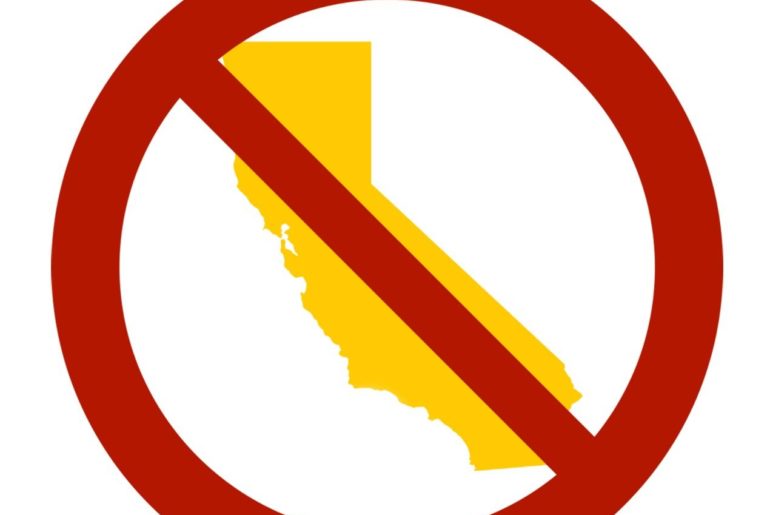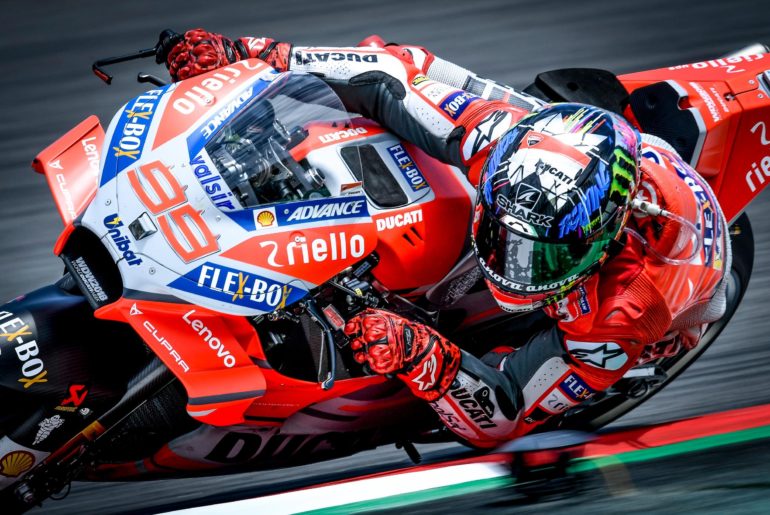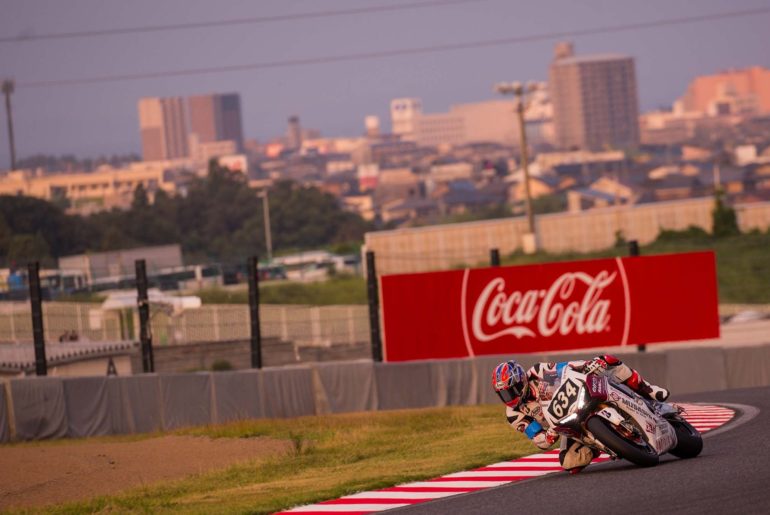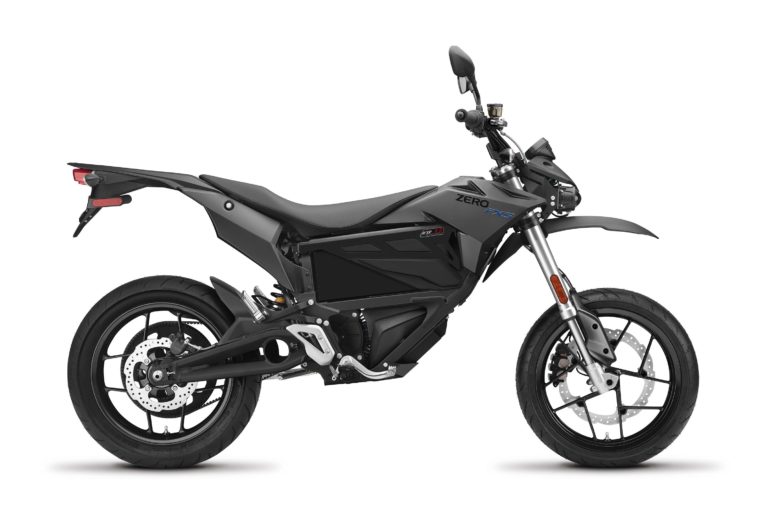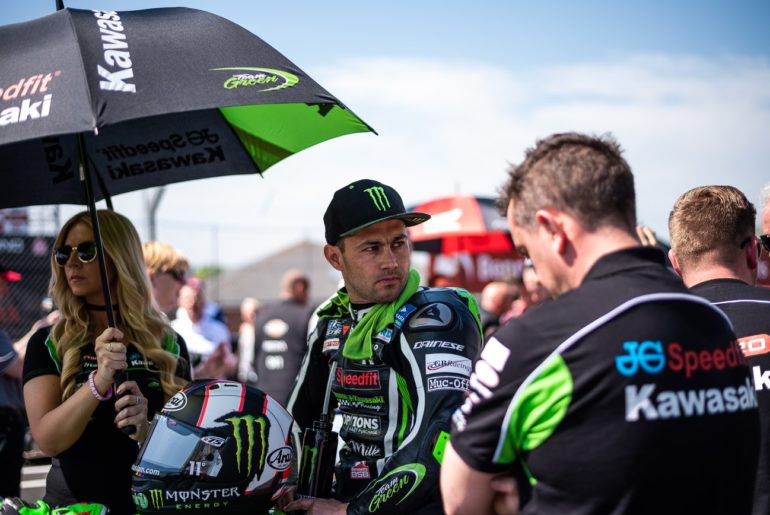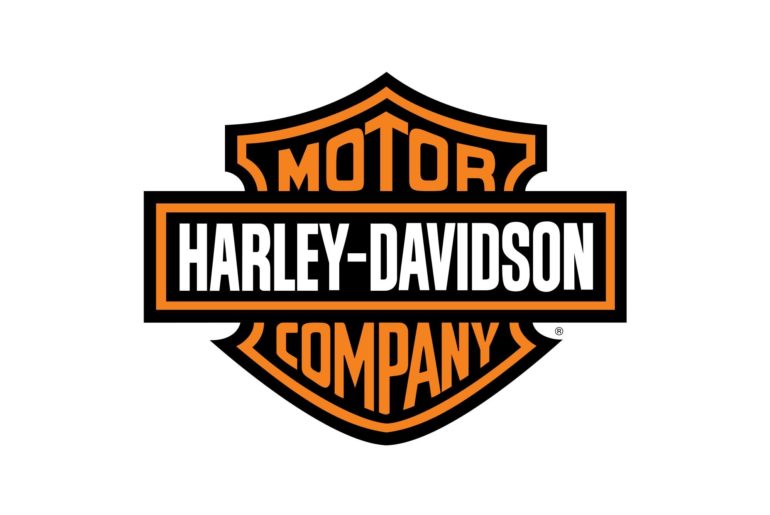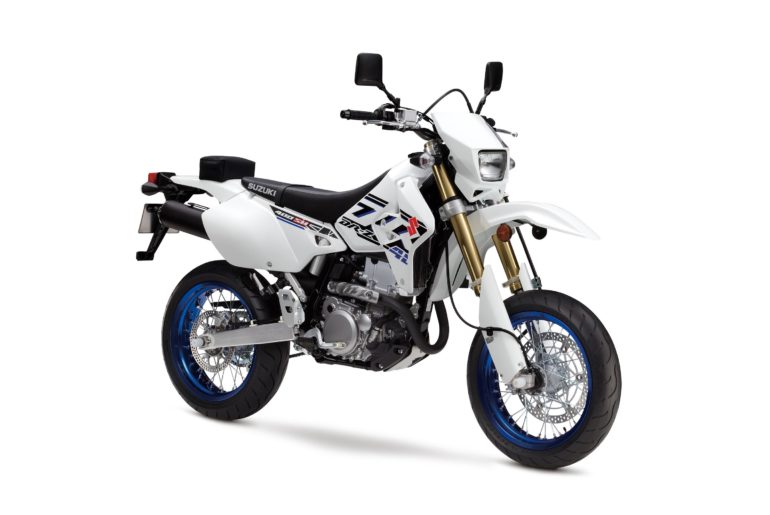What makes a good motorcycle show? Is it the amazing bikes? Is it the venue? Or is it the spirit of community that makes some of these events more special than others?
Recently, I had the opportunity to attend the inaugural Golden Bolt Motorcycle Show at The House of Machines (THoM), in the Arts District of Los Angeles, and it was a great mix of bikes, venue, and community.
The brainchild of bike build Kevin Dunworth of Loaded Gun Customs fame, the Golden Bolt offered a change from other motorcycle shows by adding some unique aspects.
First, the show was by invitation and was judged by an elite panel of experts. The judges included motorcycle industry veteran Bob Kay, designer of the Ducati Monster and Moto Guzzi California, Miguel Galluzzi, car builder, designer and TV host, Chip Foose, and welder extraordinaire, Mark Prosser.
Bob Kay explained to me how the judges were tasked with looking at the bikes using standardized score sheets, but were also to look at the details with a different focus based on their particular areas of expertise.
Foose, though not a motorcycle guy, focused on paint detail elements; Galluzzi keyed-in on the design factors; and Prosser looked at welding and metal work. The diverse backgrounds of the judges ensured that all of the appropriate elements were scrutinized.
Of course, what is a judged show without a really good prize? In this case, the winner takes all prize was $25,000! That’s a lot of money for a bike show and definitely provided incentive for some amazing builds.
The most interesting twist to this show was the requirement that entrants complete a 25 mile loop on their machines in order to be eligible to compete. No show ponies here!
The day of the actual ride was 95 degrees, and the group spent a couple of hours working their way through the traffic filled streets of LA. Not a bad proving ground to test the mettle of a machine.
Dunworth added, “We’re changing the game a bit with the ride. It was a hell ride yesterday. Nobody died, we split lanes, and it was an epic ride and I think that needs to be said. It was hell, it was rough – it took us hours.”
“Roads were closed, LA traffic, every one of those dudes was so driven to get into that room, that they all did it. To me, that’s a band of brothers and we need to celebrate that.”
“So many times people say, that’s cool and that’s art, but you’ll see some builders come with no pistons in their bikes and stuff like that; I mean anybody can build a table lamp; come in and build a motorcycle that you can ride in LA and survive LA traffic.”
I asked Dunworth how he came up with the idea for the show. He talked about how he’s been in the bike building business for a long time, but there wasn’t really a show worth building for, explaining “A lot of builders, when they come up through the ranks wonder, how do you separate yourself?”
“So I came up with this concept of a having a really high-end builder show that’s really focused on getting away from the peer judging and really have experts in their field, or maybe even out of the motorcycle industry, come in and look at just fabrication, skill, and style.”
Dunworth then moved on to how he was able to attract builders to participate, explaining, “We really wanted to build something that featured the builders and Drew and Brad at House of Machines were like, that’s what we’re into and that’s what we wanted to do. How do we celebrate what these guys do?”
“All of us struggle. If you’re a professional and you’re not just building at night, it’s a tough gig. So to be able to exalt those guys, get them really high end builder packs (swag) and really take care of them in a way they’re not used to, and then feature that to the world and really educate what these builders are capable of; that’s where the passion and vision was in this project.”
Besides great bikes, a motorcycle show has to have a great location, and The House of Machines was perfect.
Located in the trendy arts district of LA, THoM offers a venue that is focused on the motorcycling community. With lots of couches, cool artwork, and the LA Speedshop sharing a garage door with the main floor, THoM seemed like the perfect venue.
Brad Armitage explained the THoM concept to me, “Kevin mentioned a lot about community, and there are certain elements at The House of Machines that are about the cultural experience that we all associate with motorcycles.”
“For us, live music is a big component to what we do, along with our food and our booze, and the cocktails, and you know, motorcycles are one of those pillars. But the underlying premise is it’s about community.” This was definitely a perfect spot for an intimate motorcycle show.
Unlike shows such as the One Show, the Handbuilt Show, and the Outlier’s Guild Motorcycle Show which have as many as 140 bikes, the Golden Bolt only had about 20 machines on display. At first, I was a little surprised by this fact, but in the end, I found something really interesting.
At the really big shows, I find myself moving quickly from bike to bike, trying to take it all in and catch myriad details. But frankly, with upwards of 100 bikes, that’s tough to do.
At the Golden Bolt, I found myself lingering for a much longer time at each bike which allowed me take in all the details.
You’ll notice a lot of close up photos in this article. That’s because, as I spent more time on each machine, small details made themselves more evident and I saw things I wouldn’t have seen at bigger shows.
I also enjoyed the fact that many of the builders were available to talk to throughout the event. Having the ability to just shoot the breeze with the person who built an amazing creation is always a treat. It was fun to learn the nuances of a build and the stories behind the machines.
Even though the show was small, there was something for everyone on display. There were classic Japanese builds like the GL500 Honda from Sean Zeigler of Other Life Cycles, the Honda CB400 by Eric Bess of Flying Tiger Motorcycles, and Dustin Kott’s small bore Honda Café’ racer.
There was plenty of American Iron, too including a Motus Custom Chopper by Lock Baker of Eastern Fabrications, and a Motus Café’ bike from Brian Fuller.
And of course, you can’t have an American bike show without some really tricked out Harleys, which included a carbon wheeled street fighter from Shaun and Aaron Guardado of Suicide Machine, and a beautifully restored springer hard tail built by Jordan Dickinson of Union Speed and Style.
Jay Larossa of Lossa Engineering showed off an amazing Ducati with a gold flecked trellis frame, while Joe Panzer of Panzer Metalworks displayed a girder forked two stroke Yamaha that boggled my mind.
Another of my favorites was the Ducati from Tony Prust of Analog Cycles, which previously won the Design and Style award at the 2018 Quail Motorcycle Gathering. These were just a few of the highlights for me.
But the bike that stole the show and took home the $25K was Maxwell Hazan’s 1938 J.A.P 500. Hazan built an amazingly simple and light frame around an iconic motor, resulting in a machine that was absolutely sublime.
The engine was the jewel of the build, but the details of the nickel plated frame, brakeless spoked wheels, and a transmission mounted disc brake were a sight to behold. Oh yeah, the 80 year old engine made the 25 mile ride in 95 degree heat without a hitch!
As I looked around the show, I was pleased to see that many of the attendees and builders were younger. I asked Dunworth about the youthful aspect and the networking opportunities at this show.
He said, “How do I teach a young guy about these guys (the experienced builders). A lot of times that’s closed off. We become a competitive community. What I was trying to do was offer, here’s the guys you need to speak to at this event, and have an event that can feed that type and still allow some garage builders to get in.”
Dunworth added, “This is totally a networking exercise for the builders, and also educational. So how do you take a very competitive, very artistic, very creative, very stubborn, very headstrong guy and how do you educate that guy who’s been building bikes in his own shop for years to talk to corporations, to carry themselves, to be involved in what we have going on and celebrate their hardships and help get them the connections they need to get to the next level.”
Besides talking about support for the builders, I asked Dunworth about the general health of the motorcycle industry and how we often hear that the motorcycle industry is dying and Millennials and Centennials aren’t embracing the sport we love.
His answer might surprise you, “I get asked this a lot. I do Motorcycle Industry Council contracts and I’m privy to some information that the average guy at my pay scale doesn’t get, and I think the state of the industry is actually really good. I think it’s changing and I think that’s scary and I think, when people are fearful, I think they move and they make things happen.
“I think it’s a great time for brand influencers, I think it’s a great time for education. You hear a lot about millennial marketing; how they don’t want to do this and don’t want to do that, but my argument to that is that’s not true.”
“Millennials love to digest information and it’s our job to put that information into digestible packets that they understand. It’s not that they don’t want to learn.”
“They love heritage, they love all of that stuff. It’s that the old school guys don’t know how to put the information into a package that they (Millennials) can receive.”
“I’m really excited I really think there’s an amazing future for motorcycles to be better modes of transportation. When I see fear, I see opportunity. It’s like, when do pirates go pillage a ship? When it’s got a hole in the hull, right? I think the industry has a hole in the hull.”
“While everybody’s crying the blues, there’s more licensed riders in Europe and America than there’s ever been before and used sales have never been higher. There’s more women riding than ever before, too. When it comes to ridership and moto culture, trust me, it’s alive and well.”
In the end, the Golden Bolt was a fun and different kind of show. Having topnotch builders in a comfortable setting that emphasized community and networking, really seemed to click.
The builders were approachable, the bikes were mind-blowing, and the The House of Machines was stylish yet inviting. The judged show and the big prize added an element of excitement, while the panel of expert judges lent credence to the event.
I’m glad I was able to be part of the inaugural event and look forward to what the future holds for the Golden Bolt.
Photos: © 2018 Andrew Kohn / Asphalt & Rubber – All Rights Reserved

